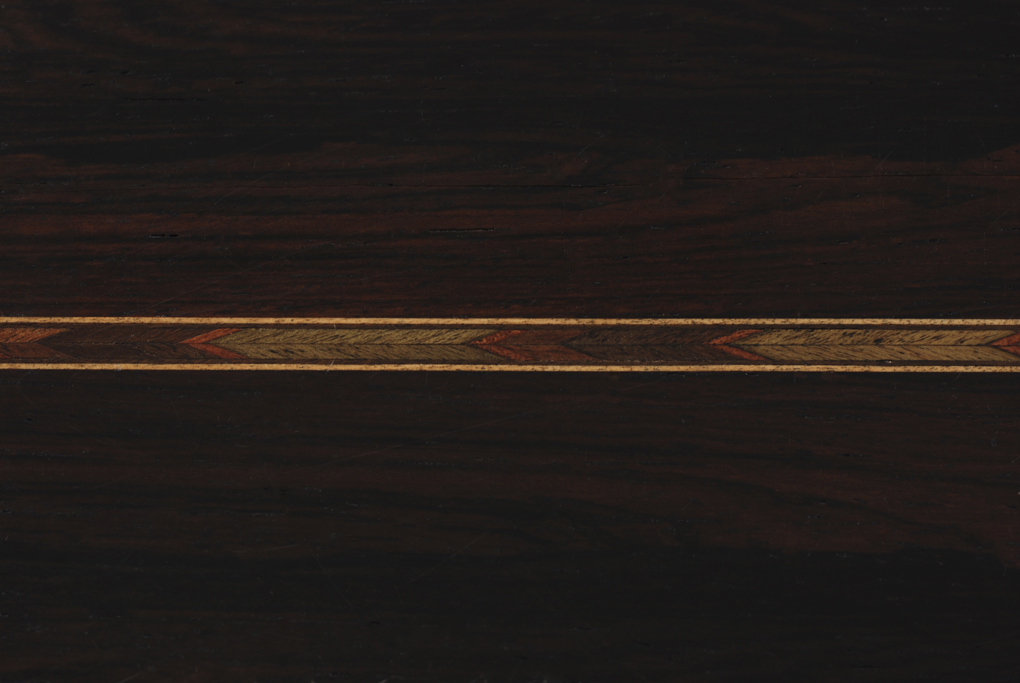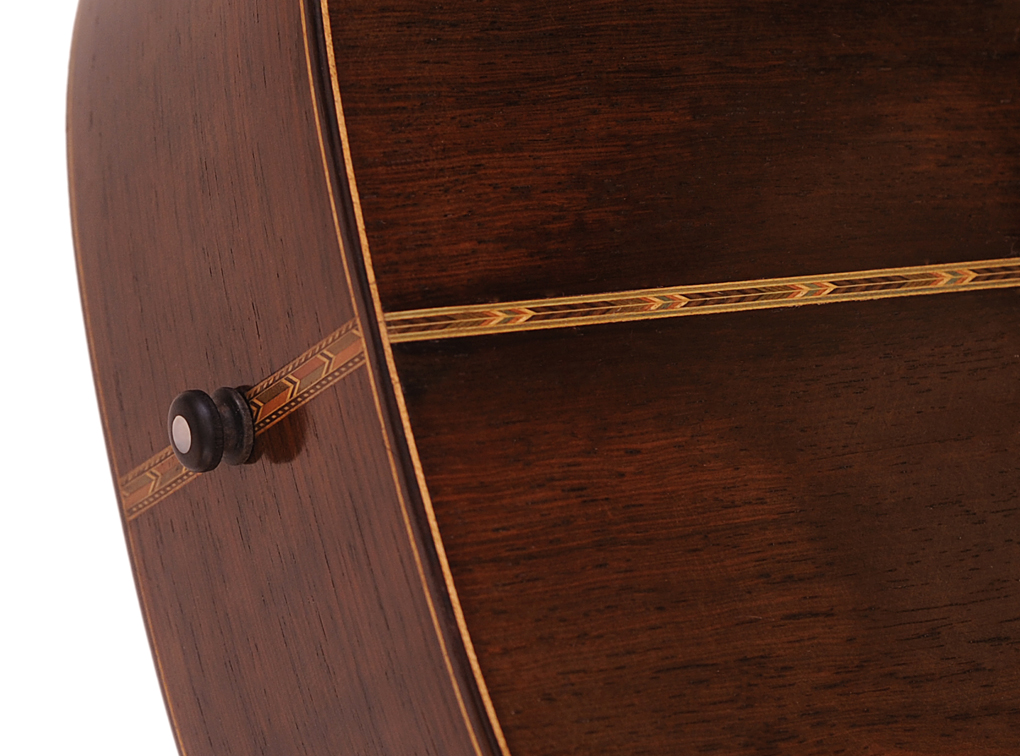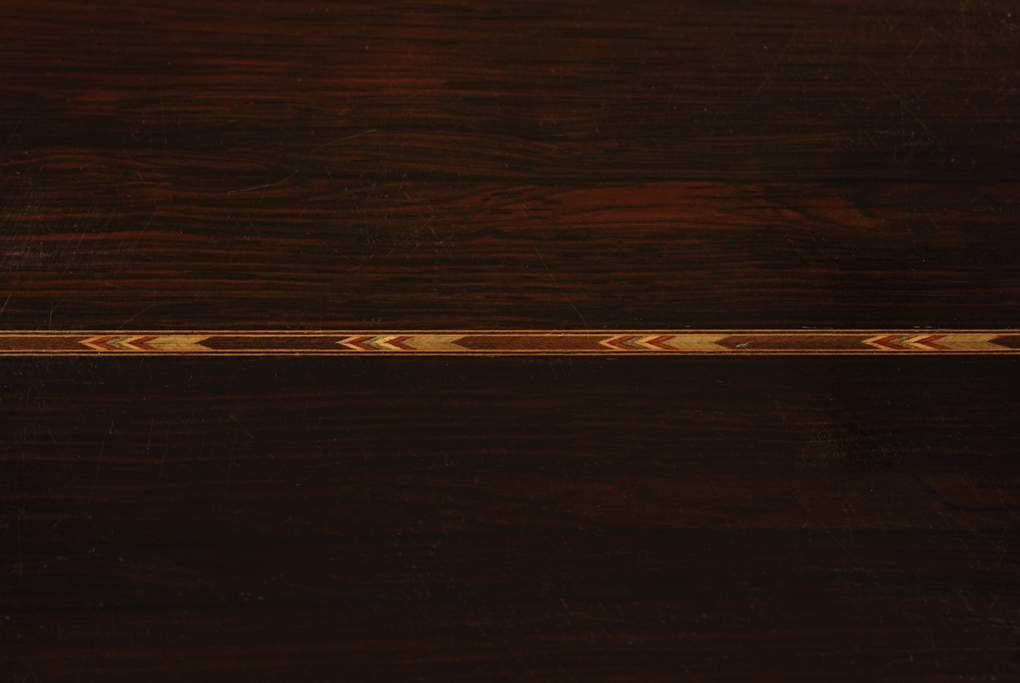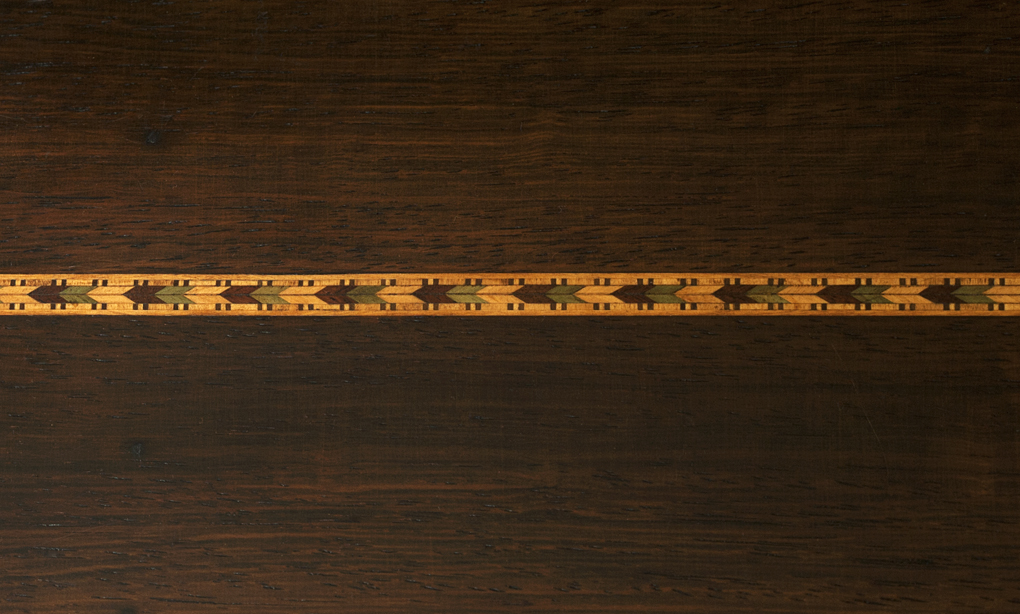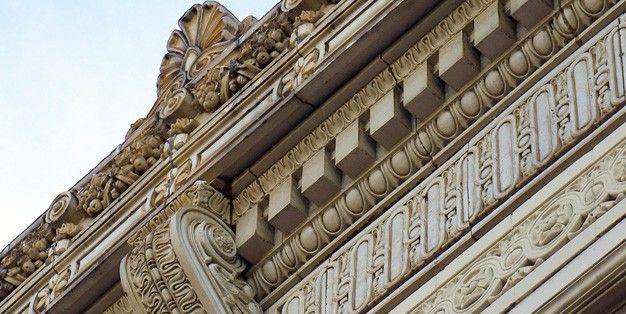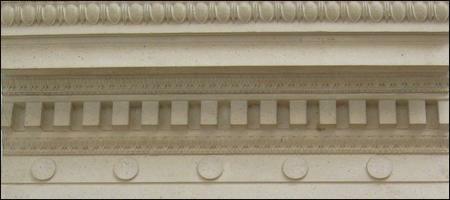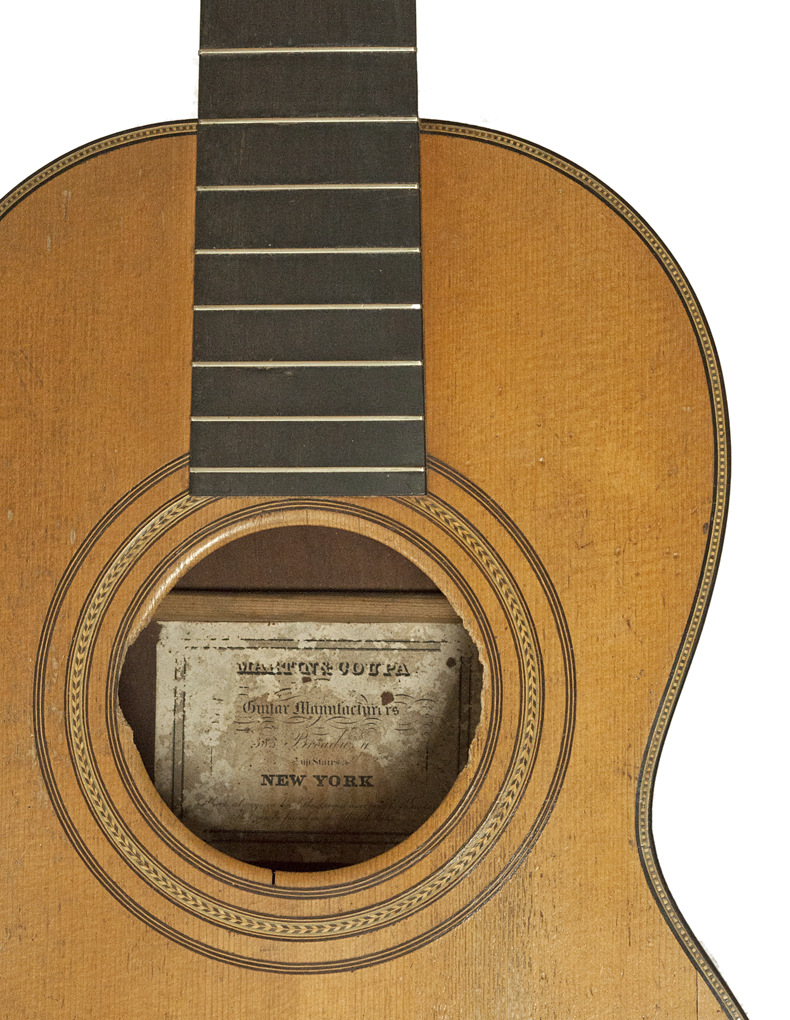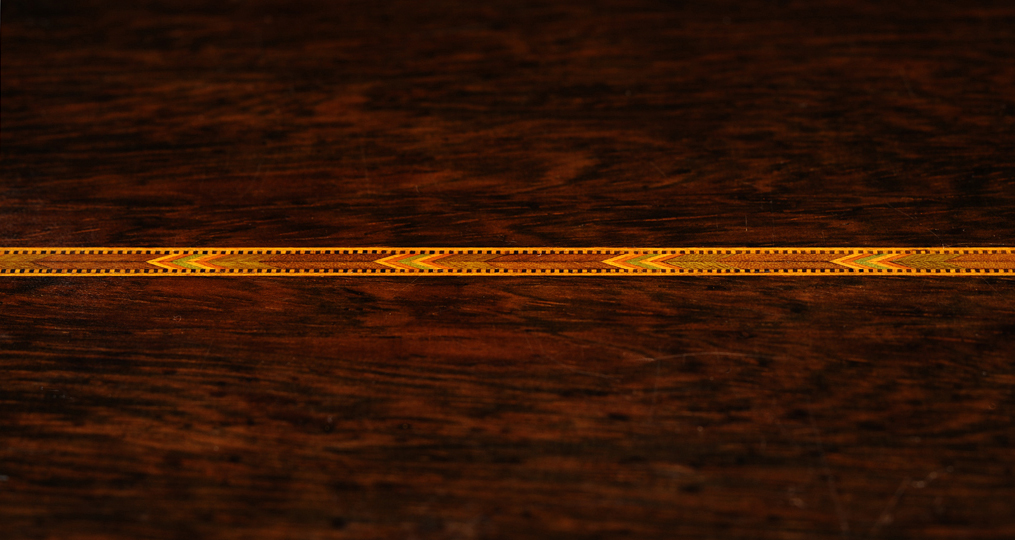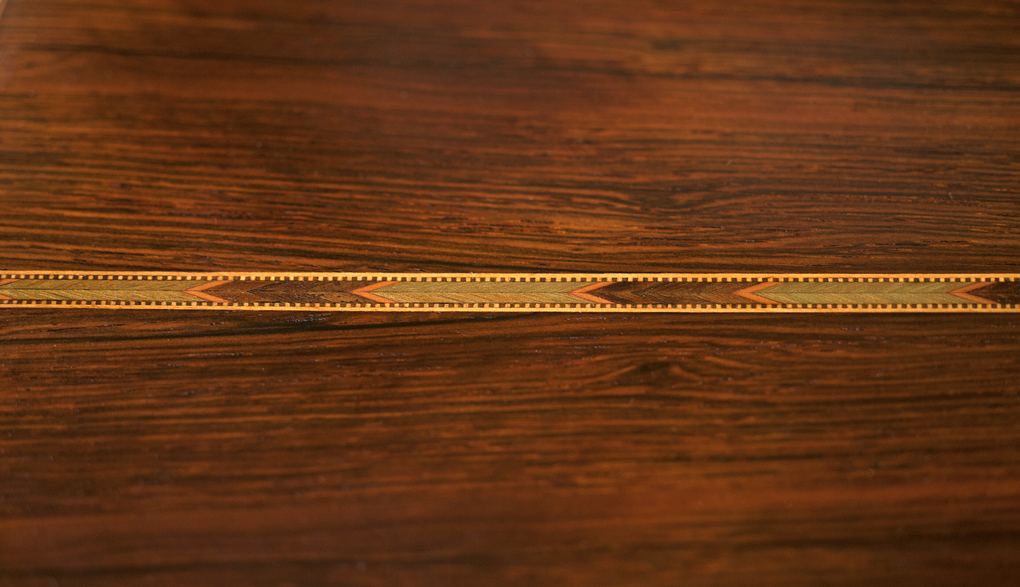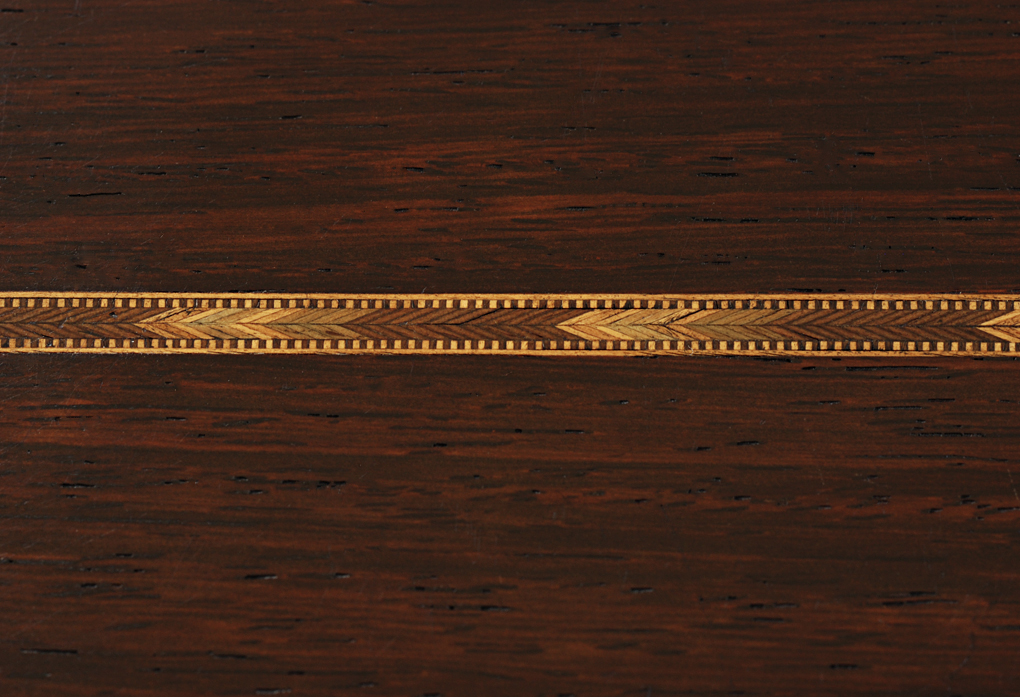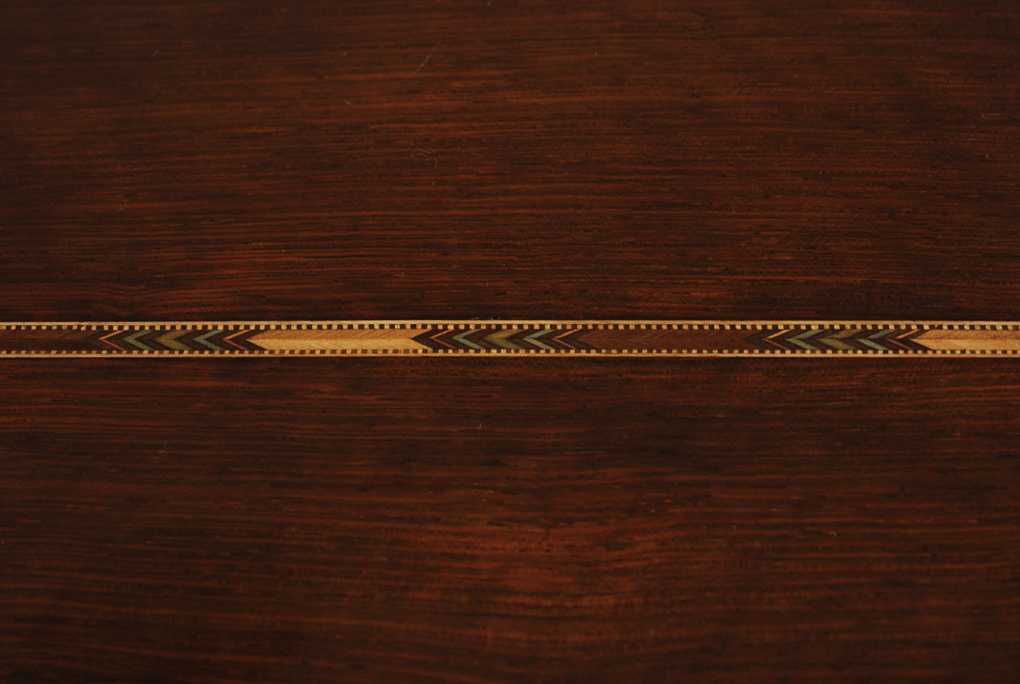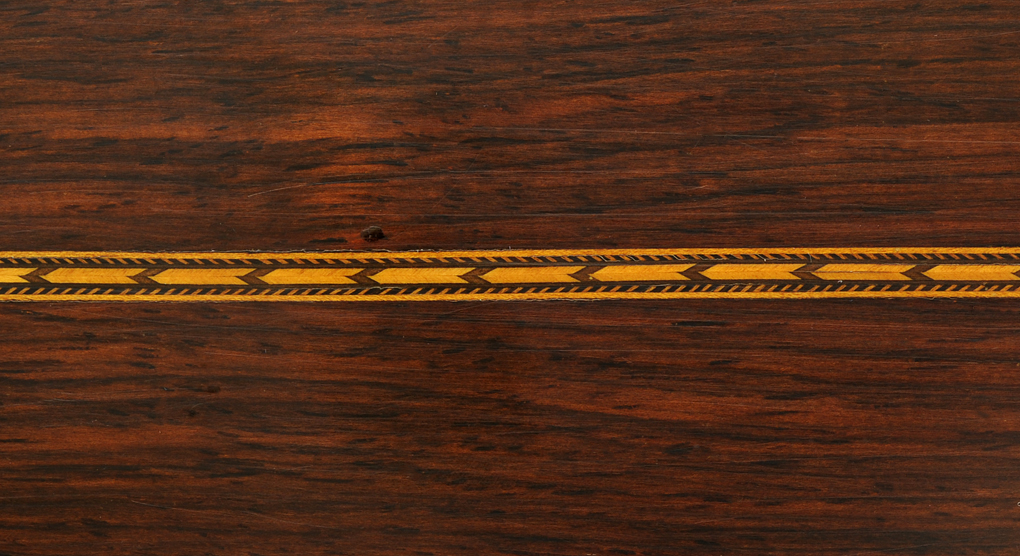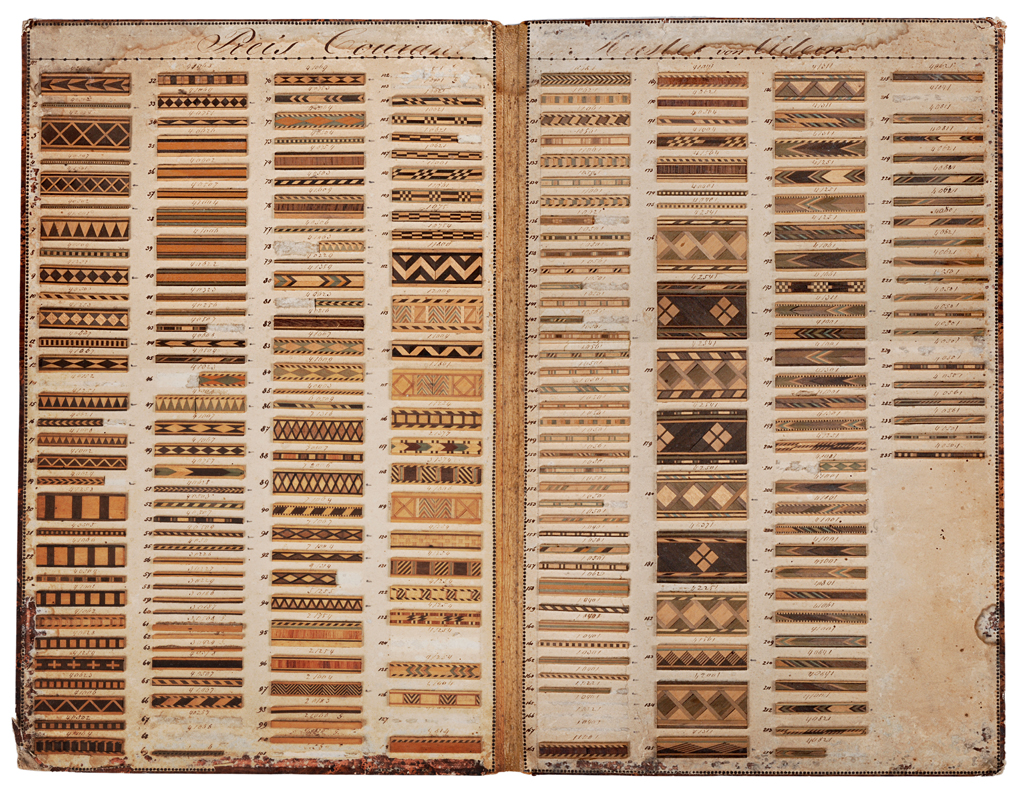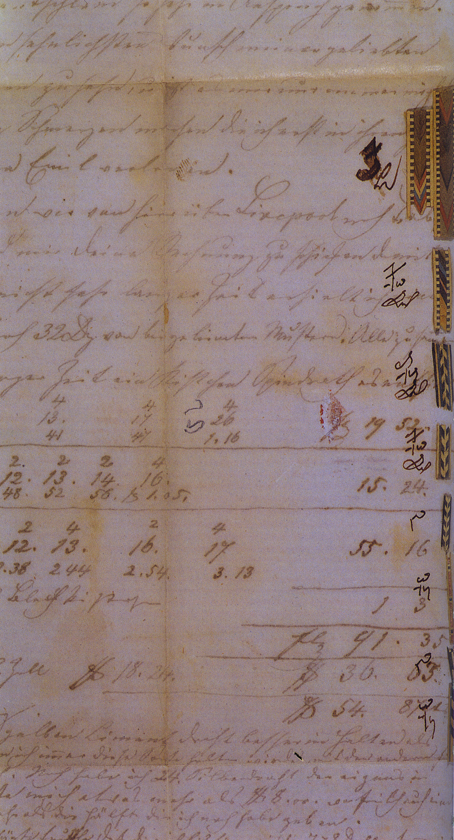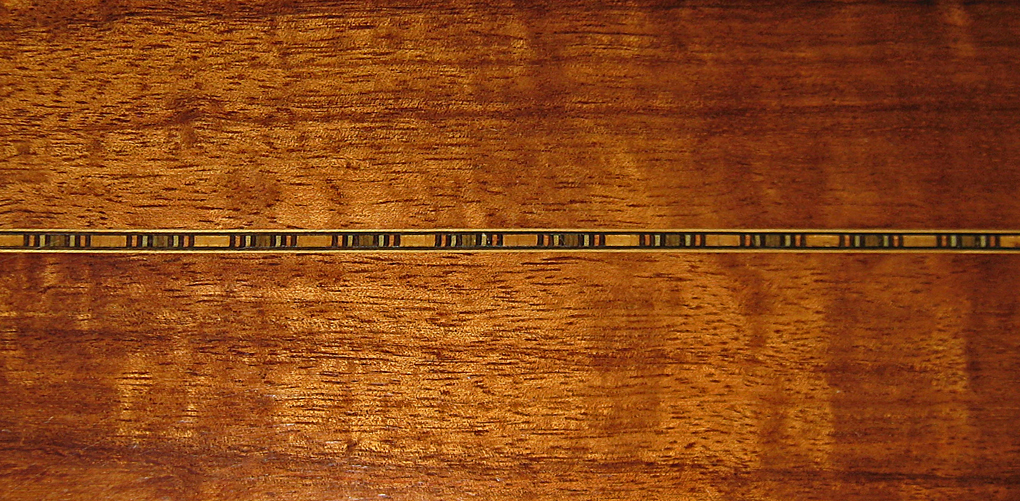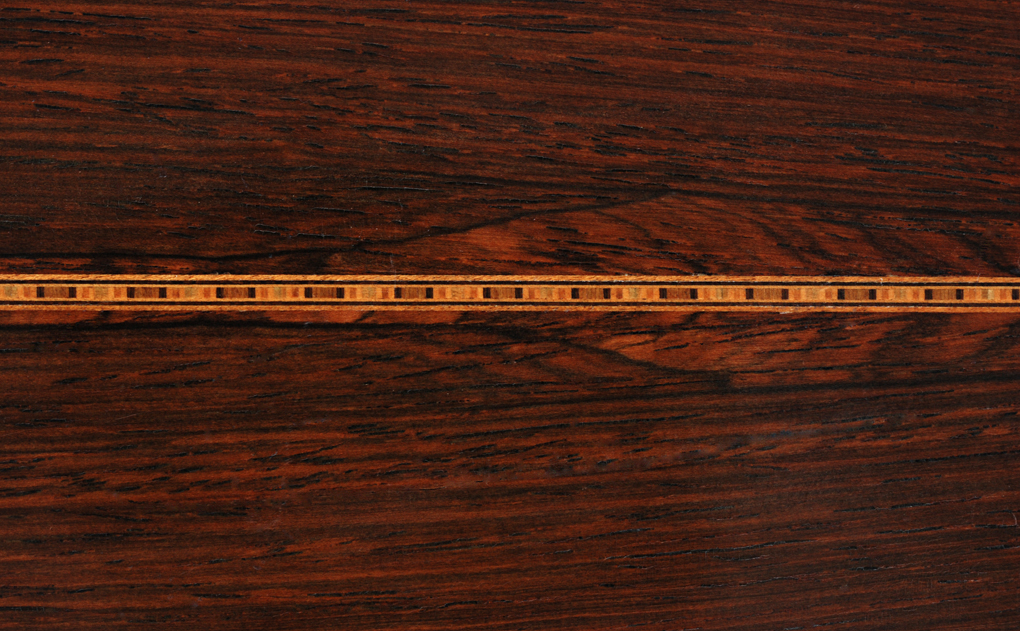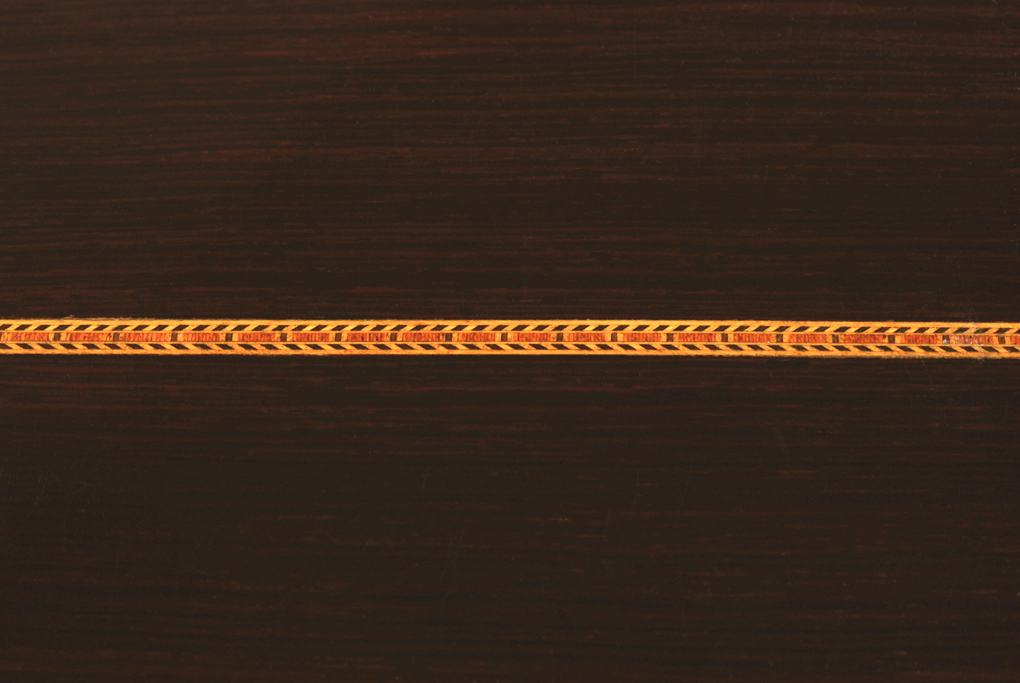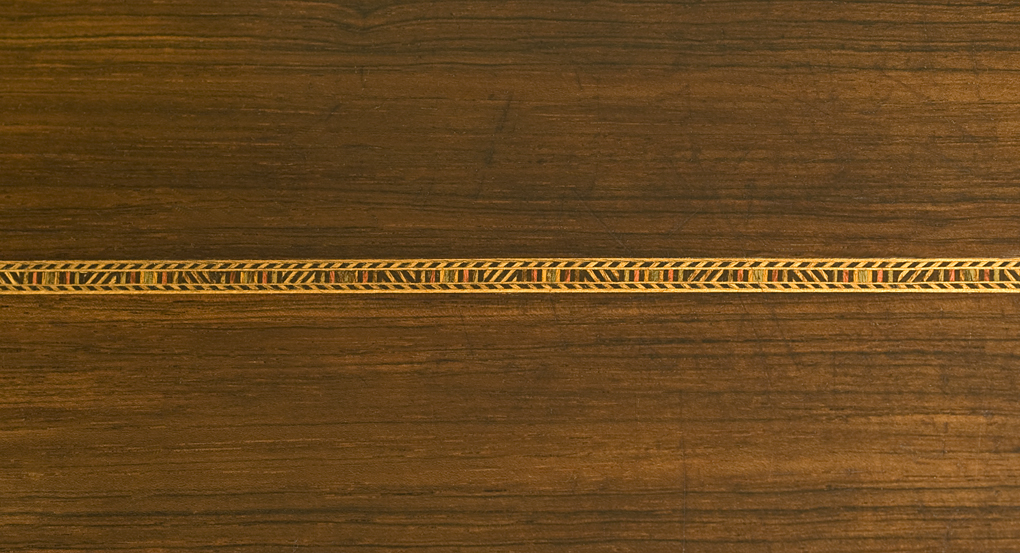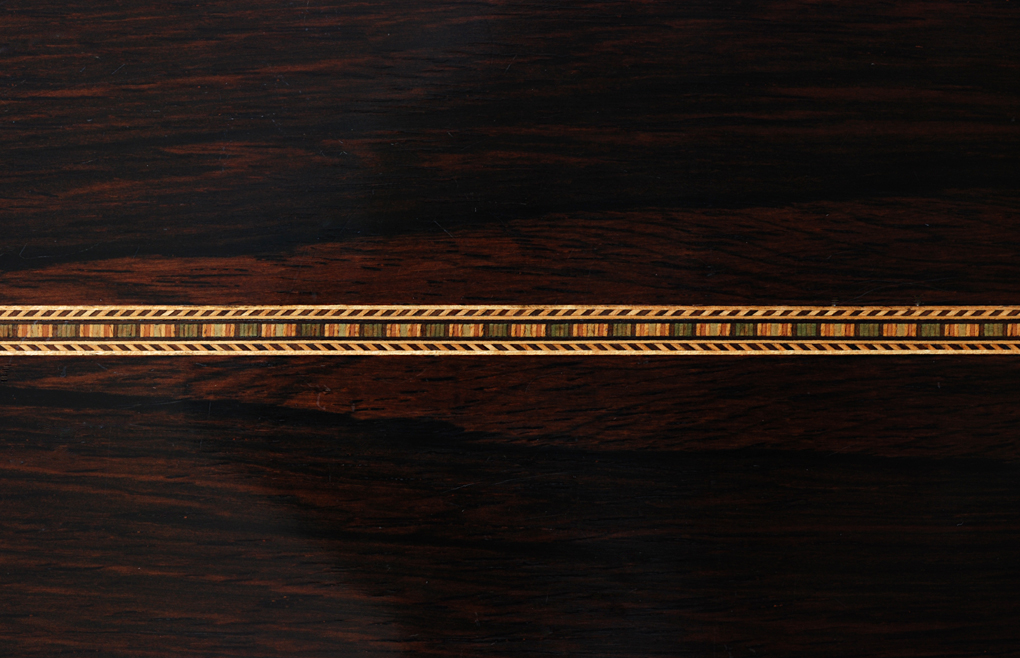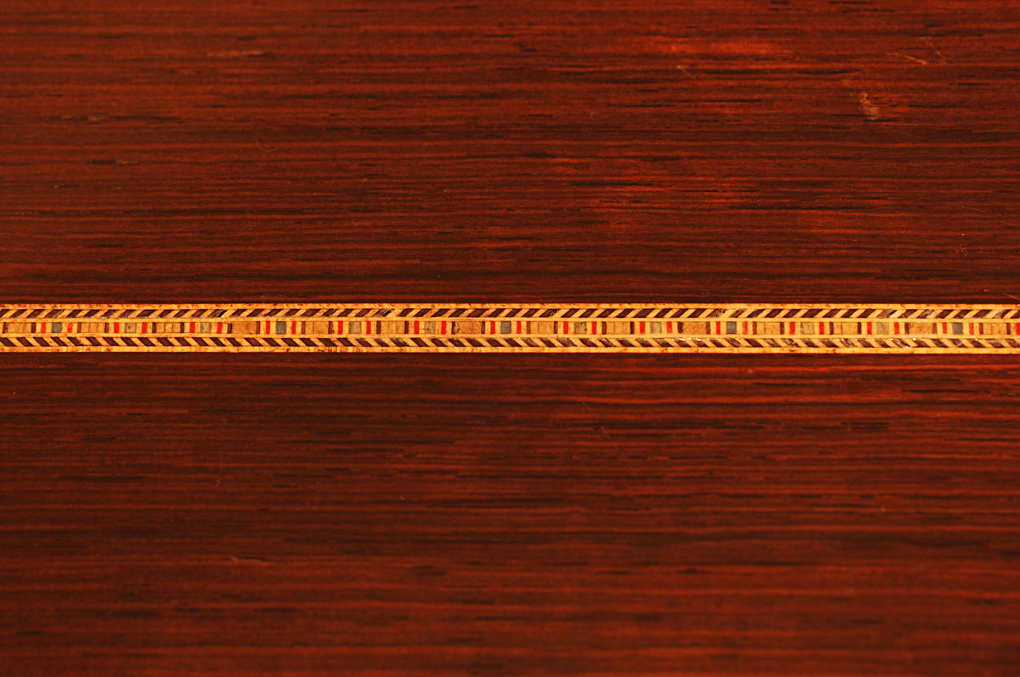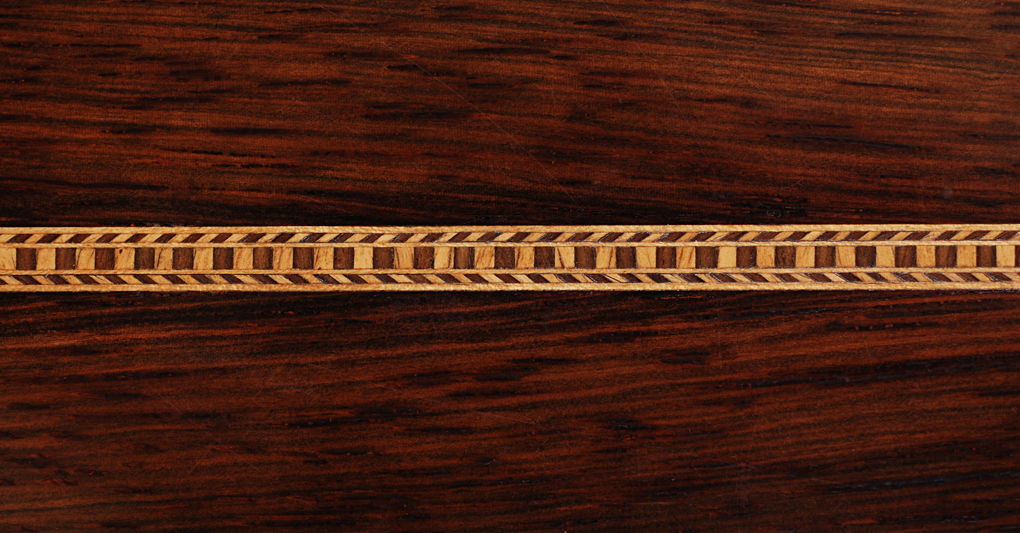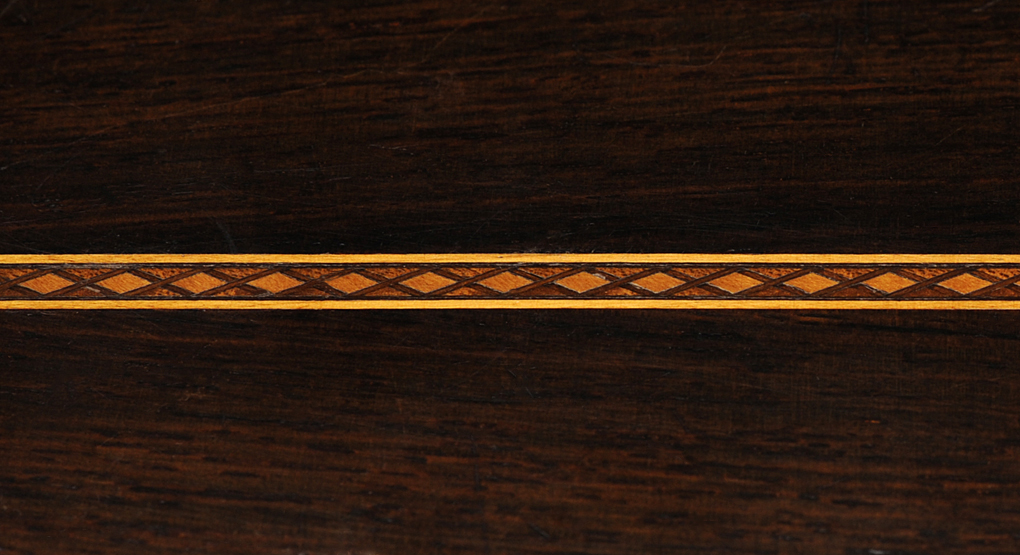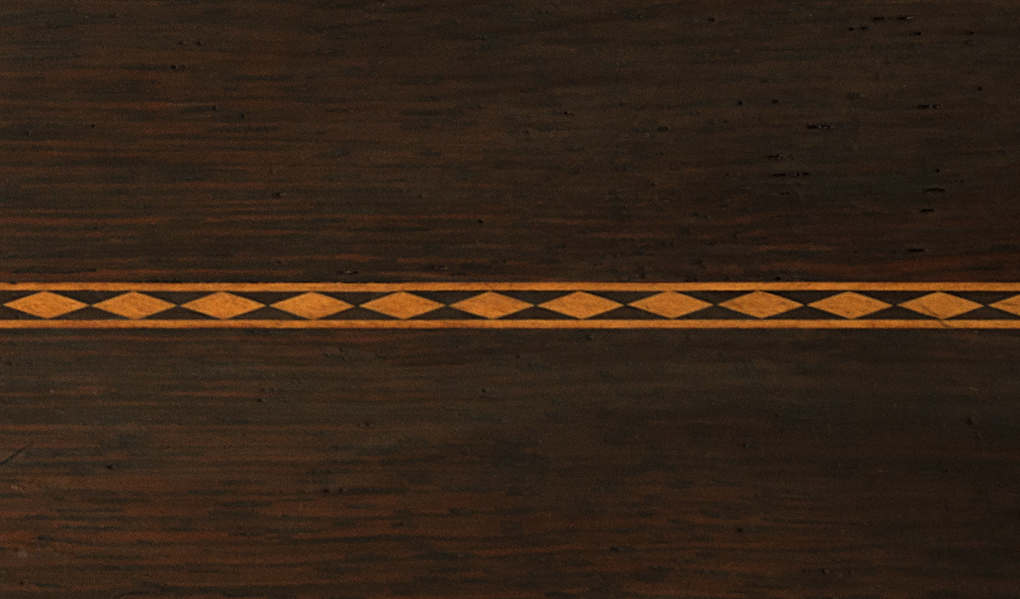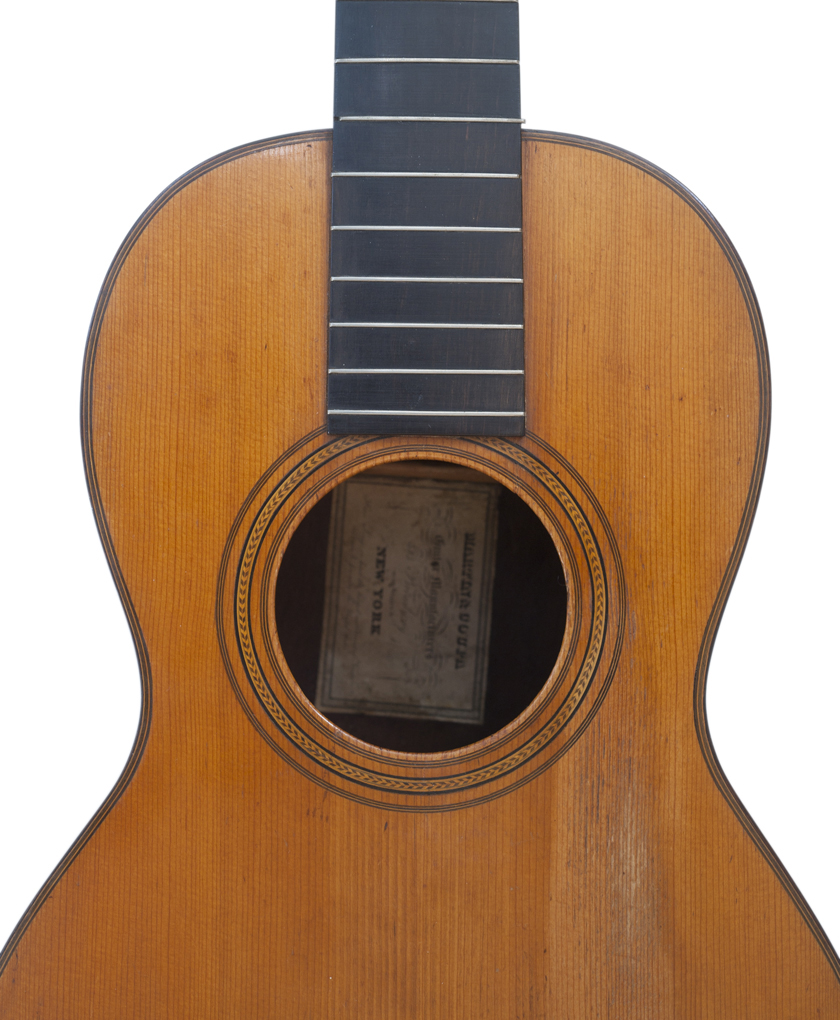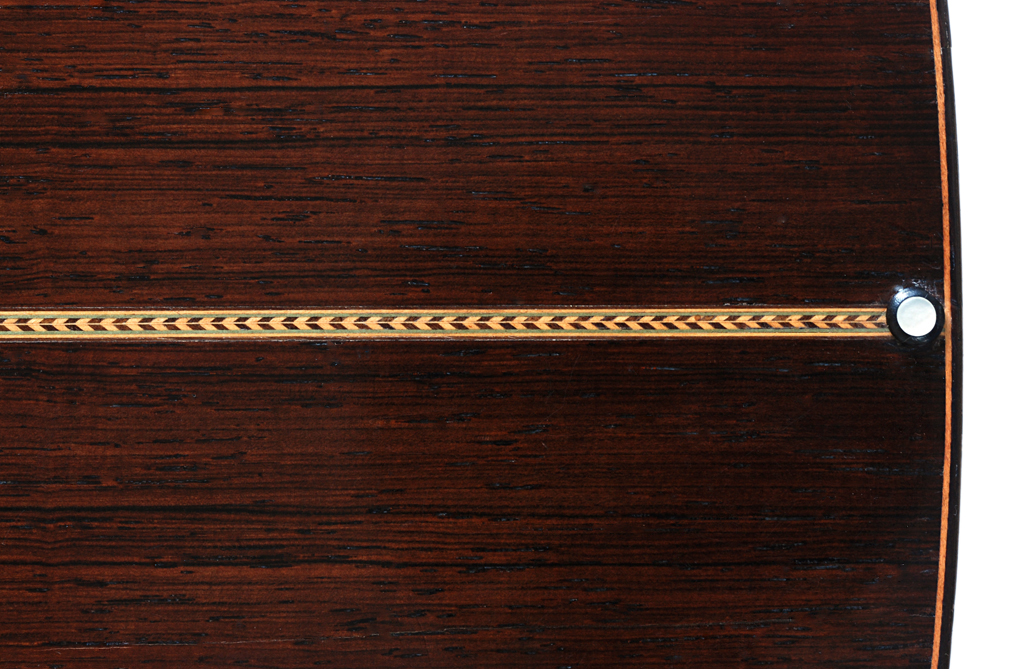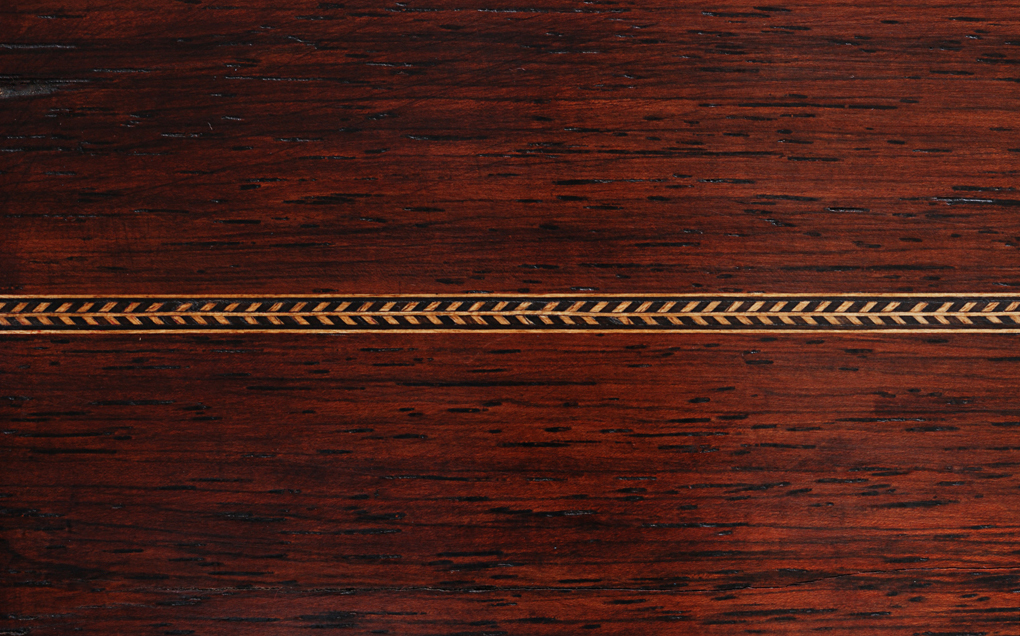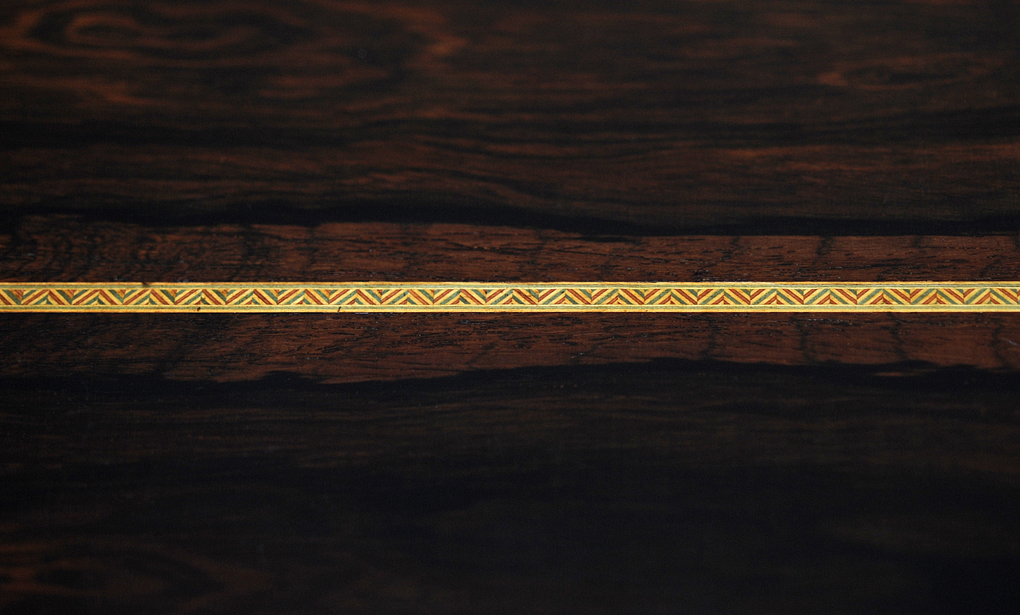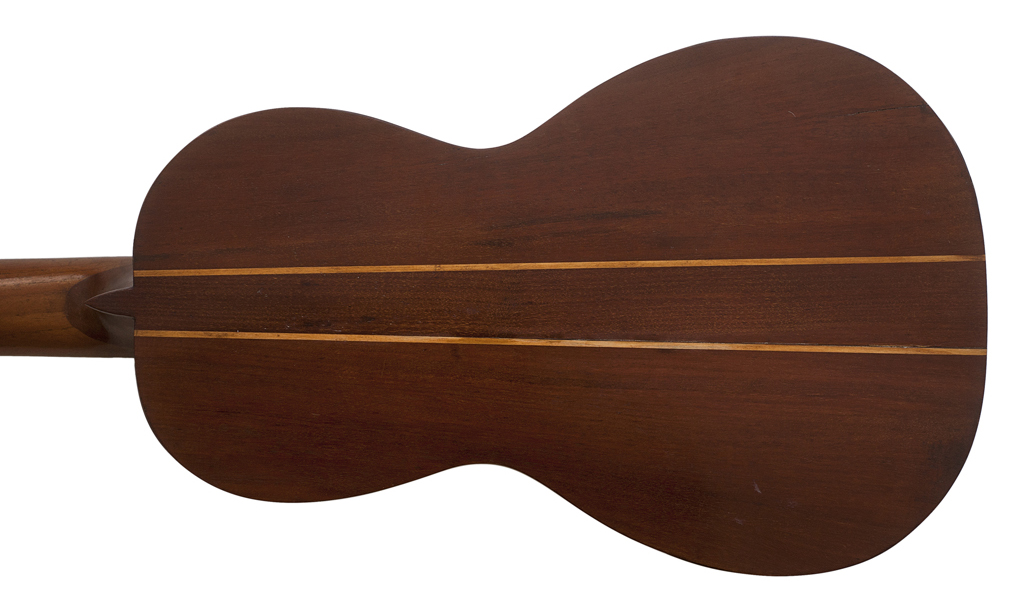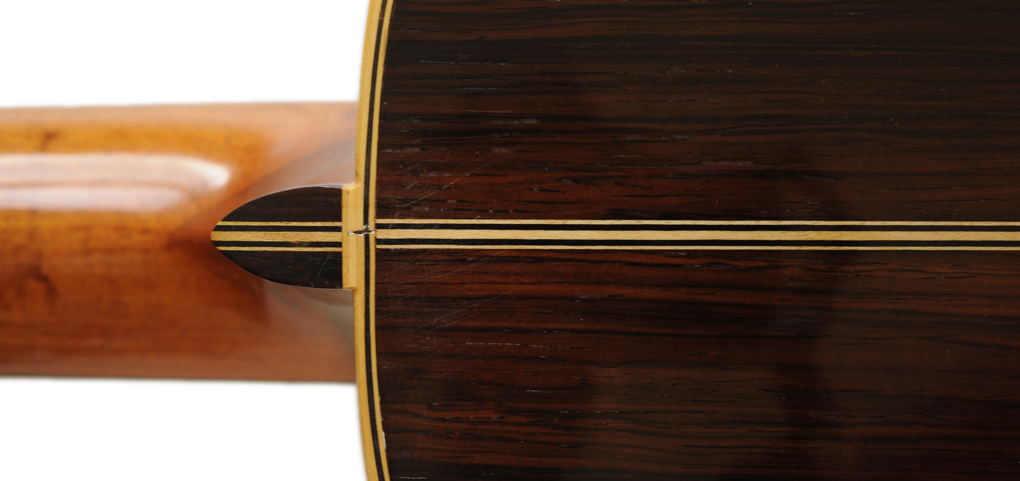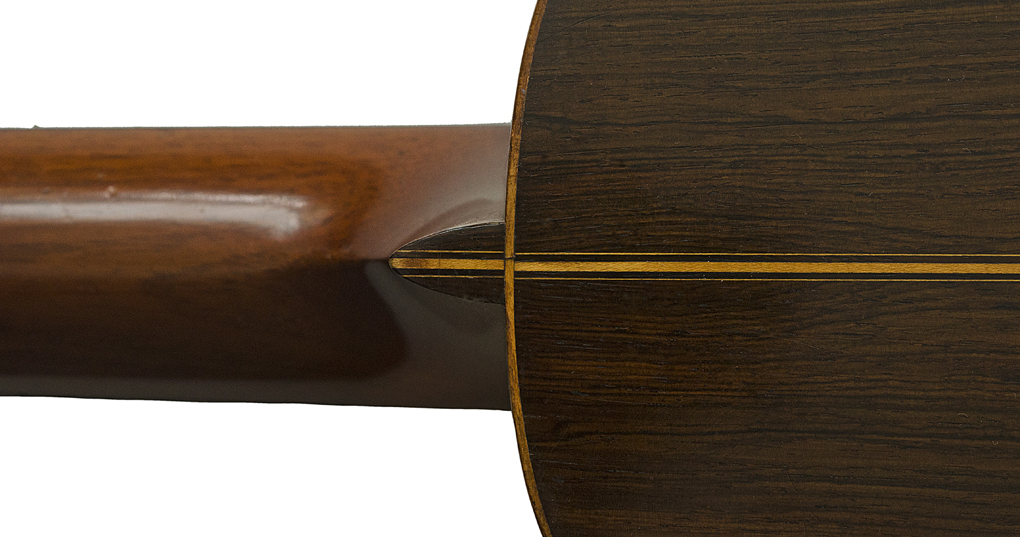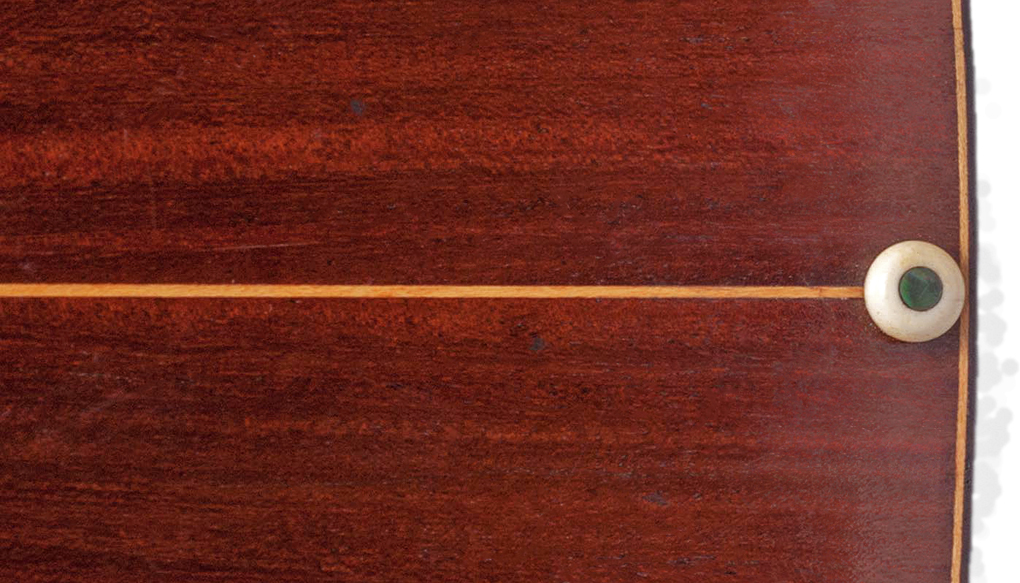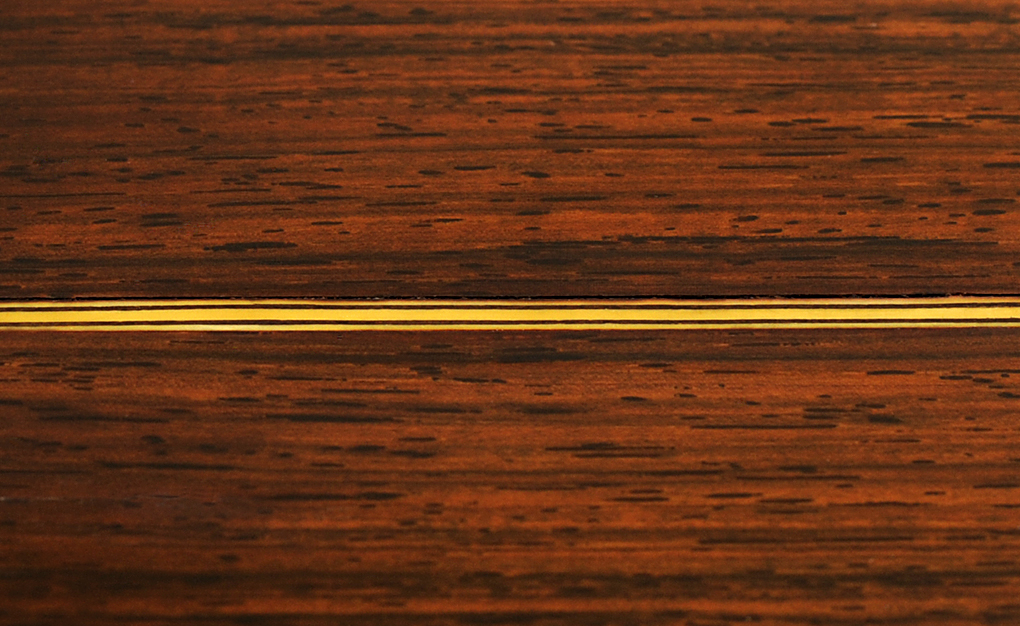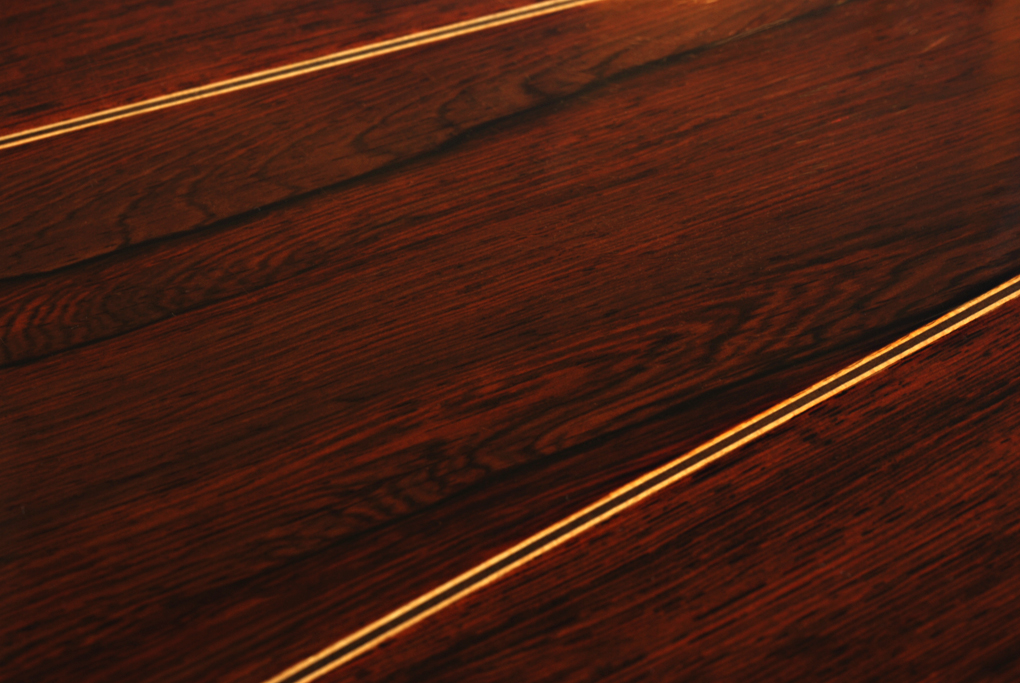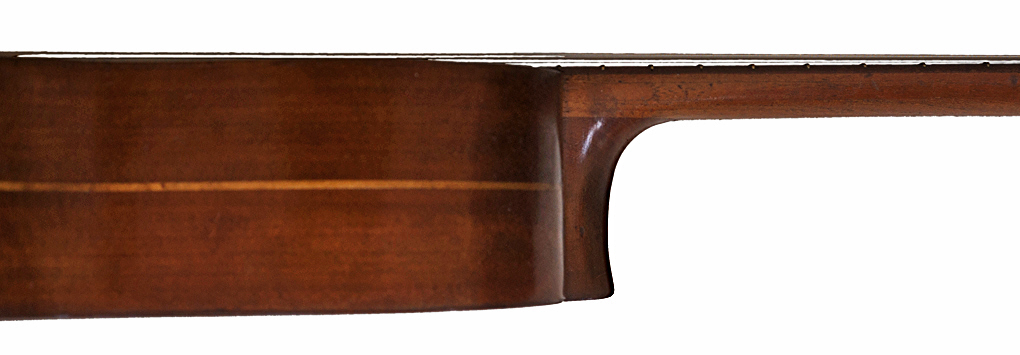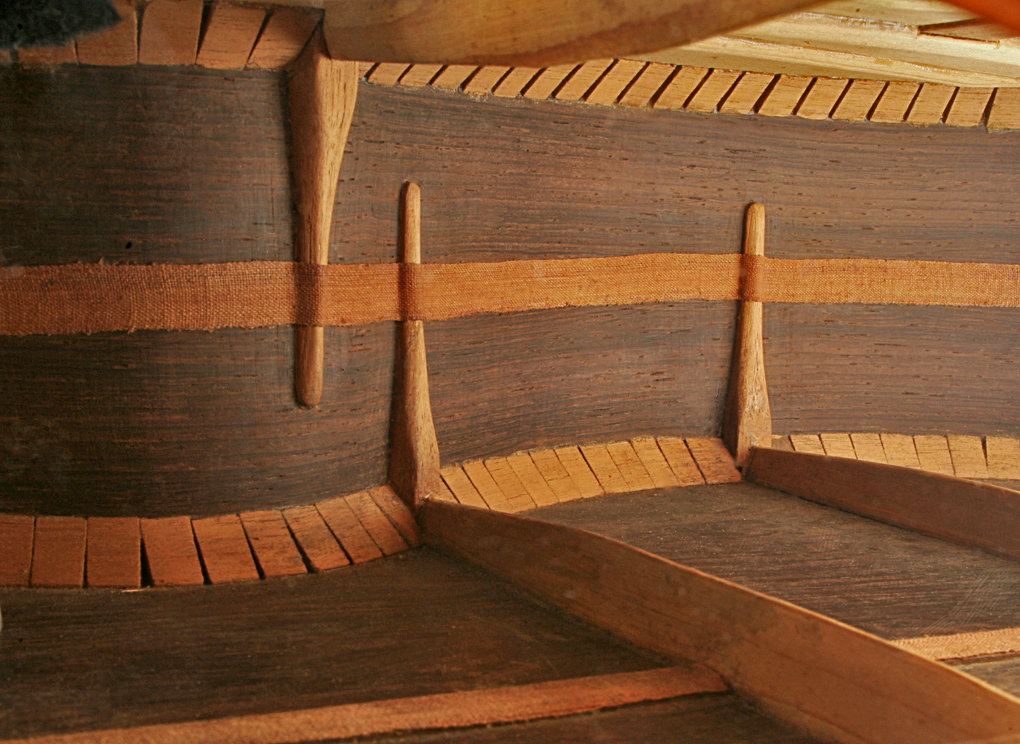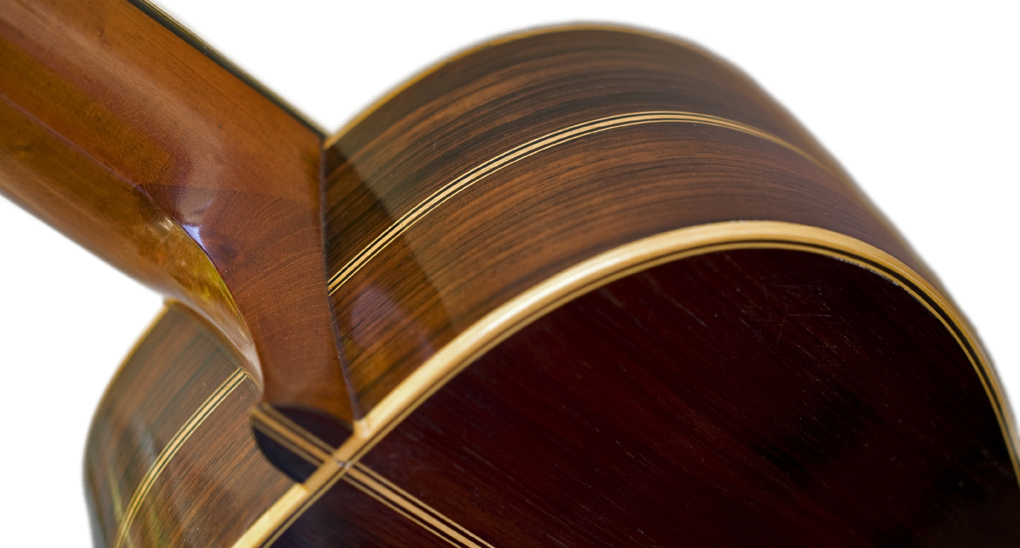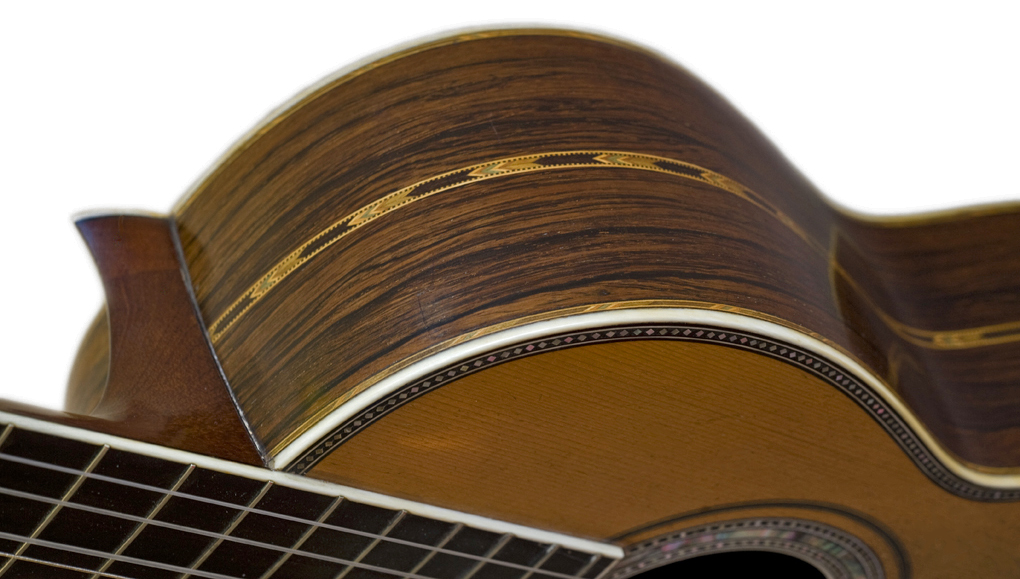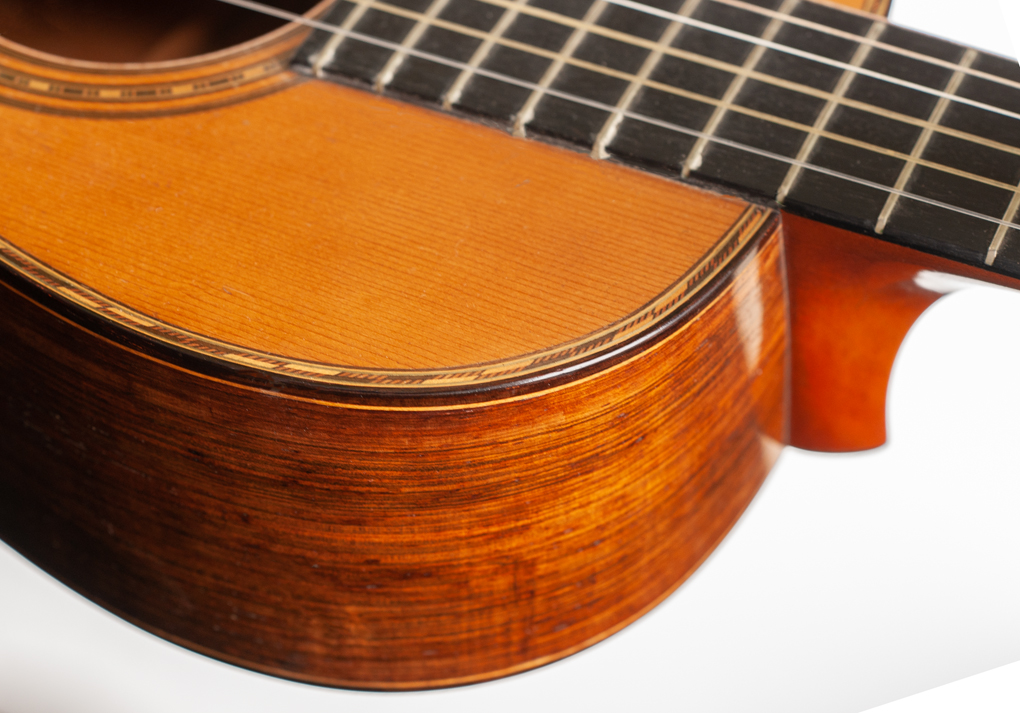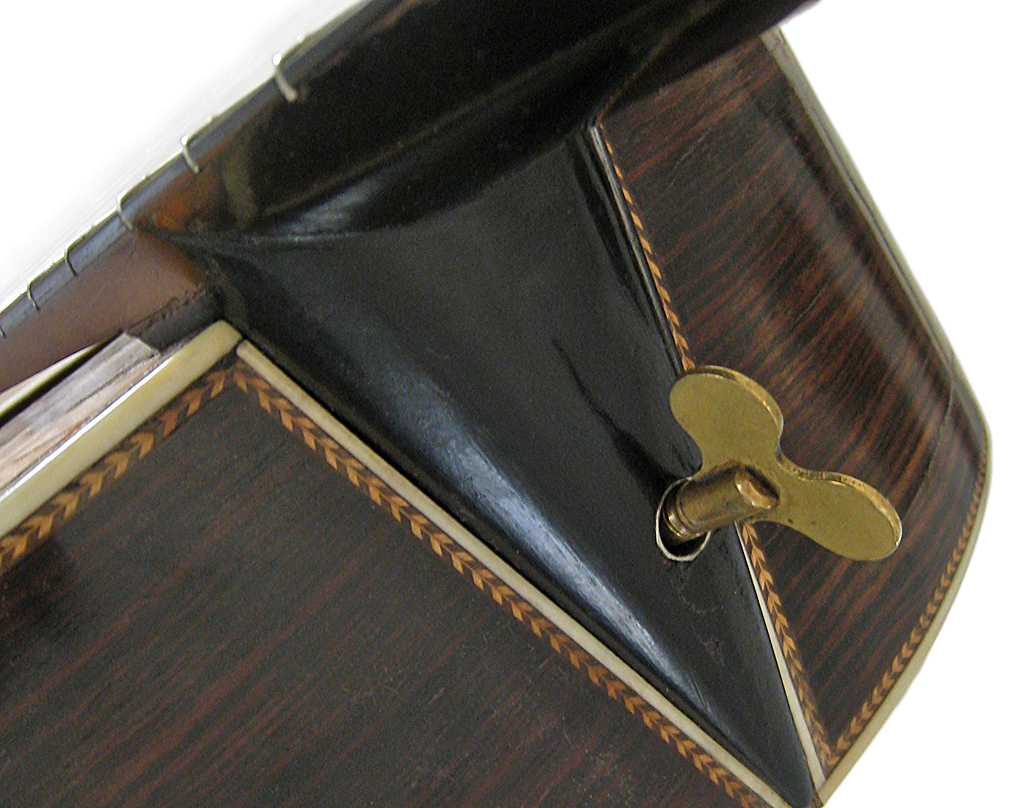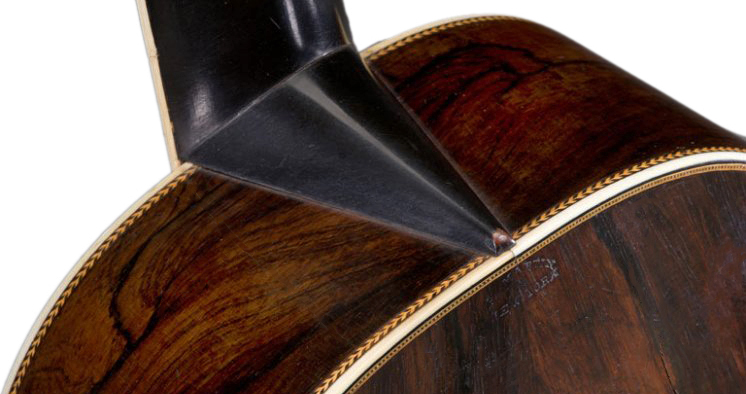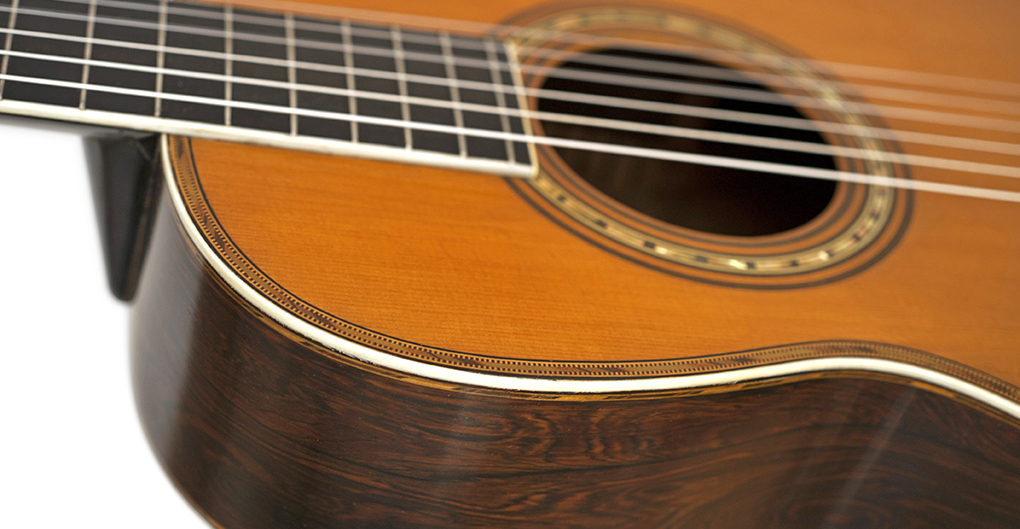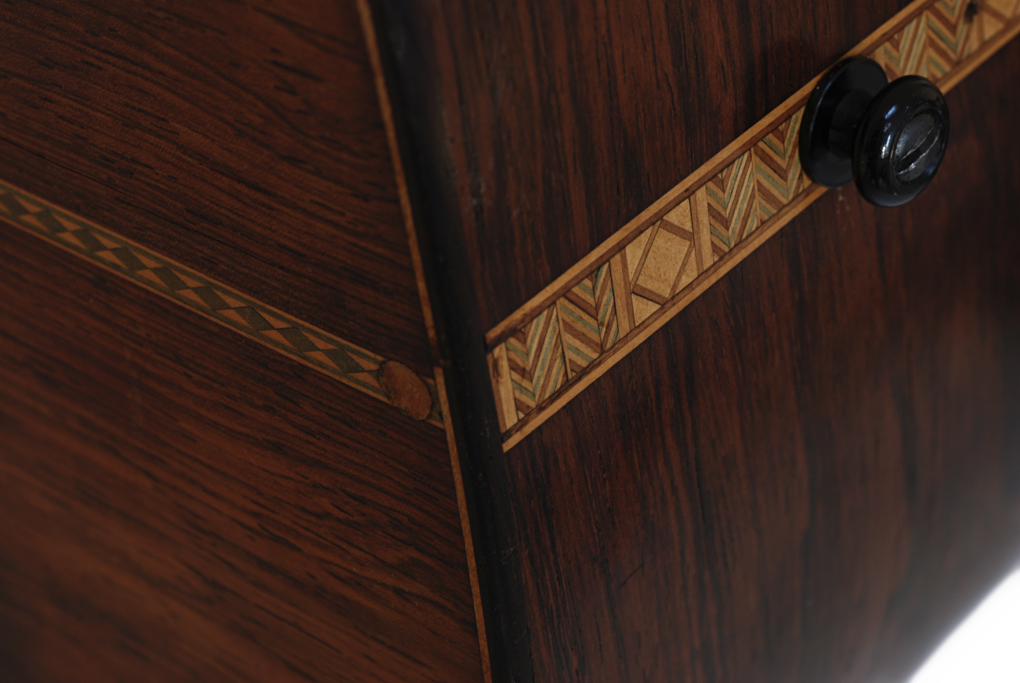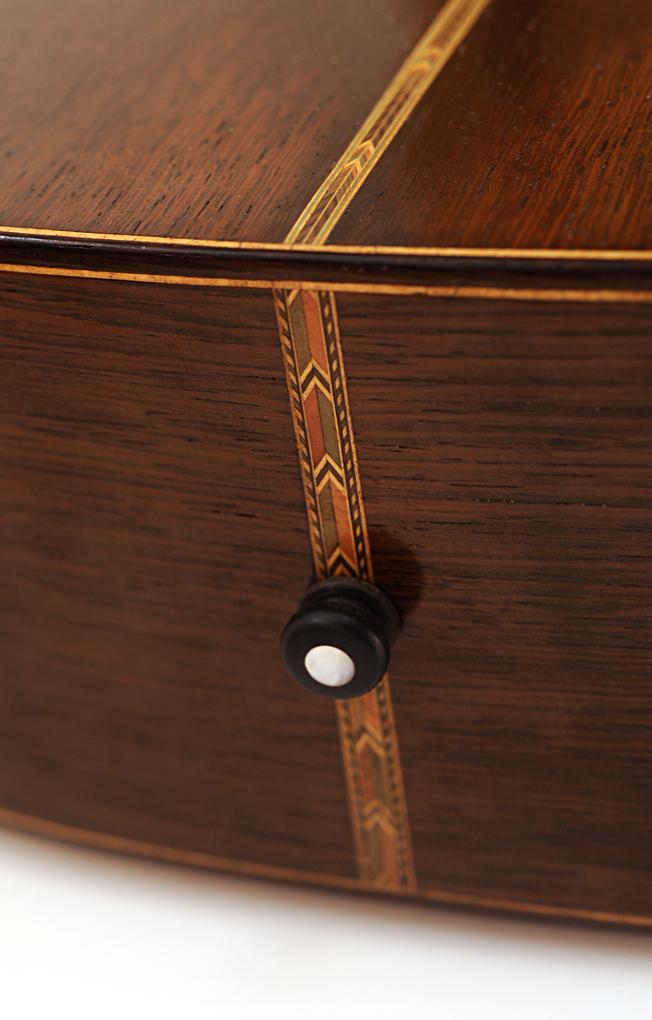Arrowheads
and Other Treasures
Marquetry on Martin Guitars
Since its earliest days, the C.F. Martin Company has maintained a
tradition of decorating its guitars with imported strips of ornamental
wood marquetry.
Early
Martins starting at $24 (eventually designated Style 24) were
often built with decorative marquetry back strips with an "arrowhead”
pattern joining the two halves of the back.
Arrowheads
without Dentils
c 1860
2-24
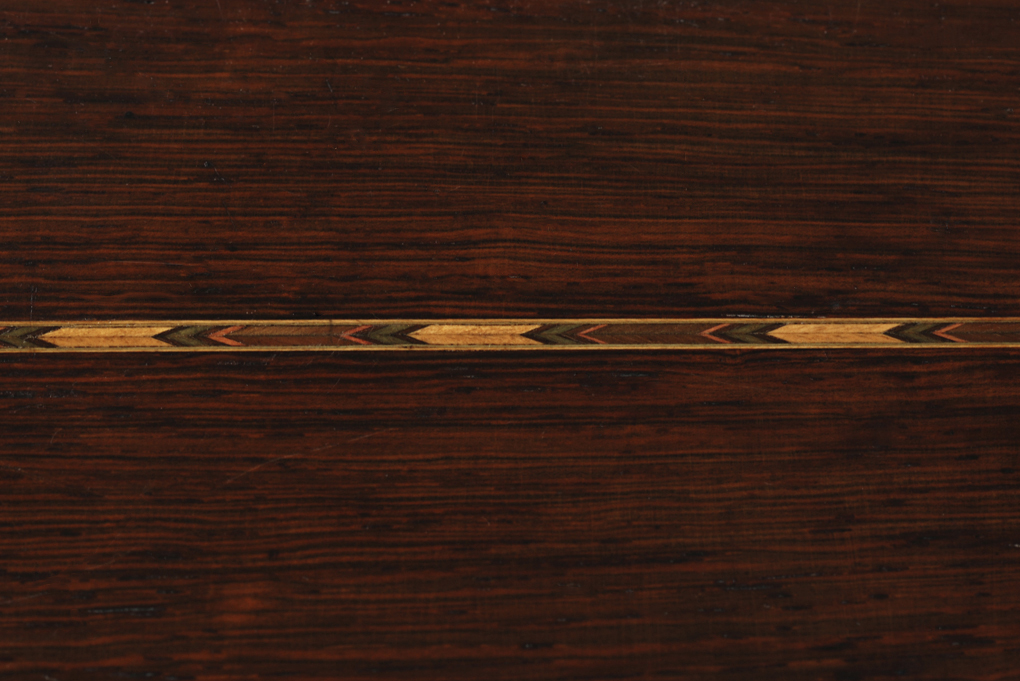
c.1870
2 1/2 - 26
1888
2 1/2 - 24
1893
2-27
1840's
Pearl Rosette Zig Zag
DENTILS and
ROPE
Nineteenth
Century Martin rosettes and top borders, as well as back, side,
and end strips, were most often comprised of two basic elements of
marquetry, “Dentils” and "Rope”.
As Martin began
to use fancier “arrowhead” patterned marquetry, "Dentils” and
“Rope” were added to the marquetry to increase complexity and
interest.
Dentils
are an architectural feature, which are named because... well they
look like teeth!
Here
you can see "dentils" added to an arrowhead...

The
Herringbone pattern that has become a signature feature of Martin
guitars is actually made of two rope patterns mirrored side by
side.
The
herringbone is most often recognized as the top border of pre-war
Stye 28 Martins, and in the rosette and back strip of Style 21
Martin guitars.
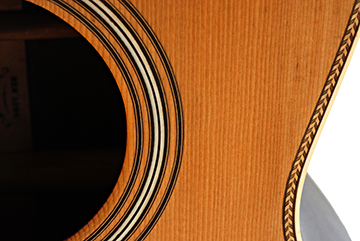
The
Style 26 typically features the "half herringbone", also known as
the "rope"...
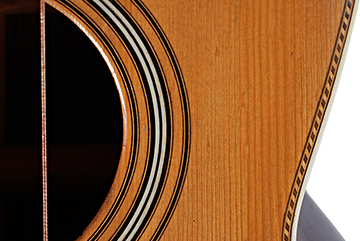
When
the "rope" is added to marquetry, it becomes what is most commonly
recognized today as Martin's "Style 45 back strip".

These
two nearly identical Martin & Coupa guitars illustrate how
Martin would often mix and match. One can only assume that
Martin had an order requesting “Goncoa Alves” wood veneer for the
back and the sides, and wanting to take advantage of the economy of
scale, chose to build a second guitar at the same time, to be
available for a second sale. Not wanting to infringe on the
uniqueness of the original buyer’s guitar, Martin varied the trim.
This pattern of behavior is common with early Martin guitars.
The
first guitar has dentils in the rosette and a rope top border, while
the second has herringbone in the rosette and dentals in the top
border…
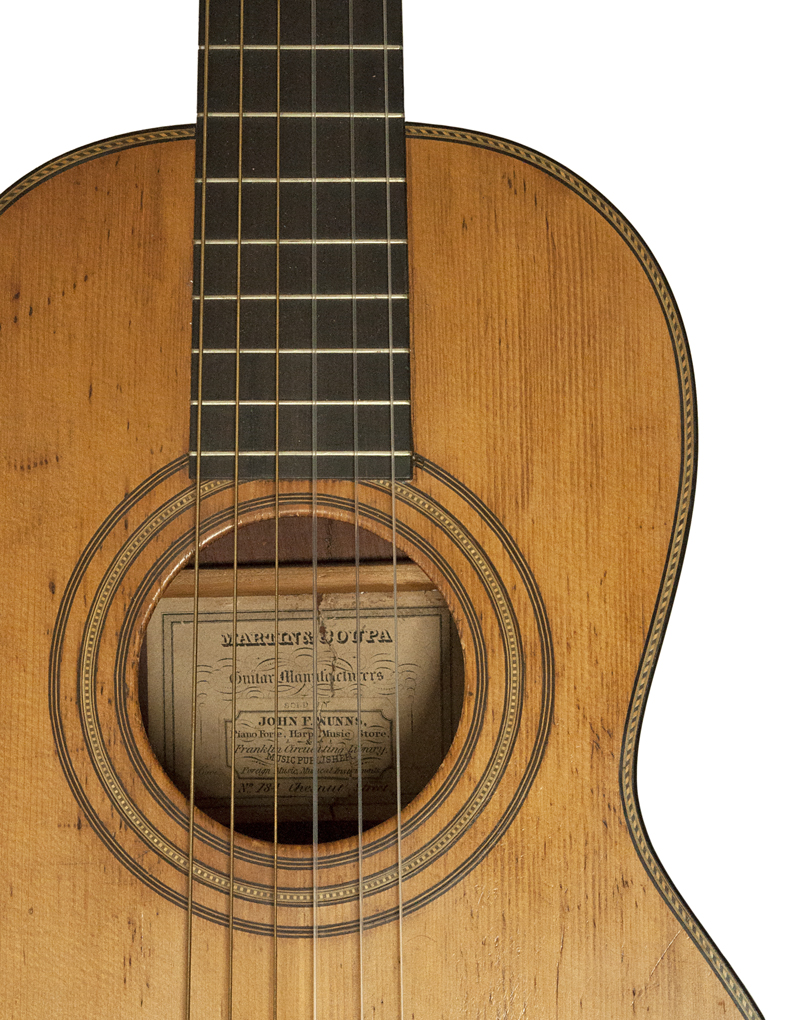
Arrowheads
with Dentils
1840's
Ivory fingerboard Vienna Headstock Guitar
1885
0-34
1894
0-42
1907
0-30
The
marquetry used by Martin was imported from Germany, as selected and
ordered from this sample card from C.H. Burdorf of Hamburg...
It’s
often noted that the missing pieces must have been the ones selected for
possible use. Where did they go? Mystery solved! The
Gura book includes this letter from Schatz to Martin, with marquetry
pieces attached…
"Style
45" Back Strip without Rope
1916
Southern California Music Style 1500
1917
0-30
"Style
45" Back Strip with Rope
While
known primarily as the "Style 45 back strip", this pattern was
originally used most often on the Style 21 before appearing on Styles
40, 42, and eventually the Style 45, introduced in 1902.
1840's Pearl
Rosette 1-28
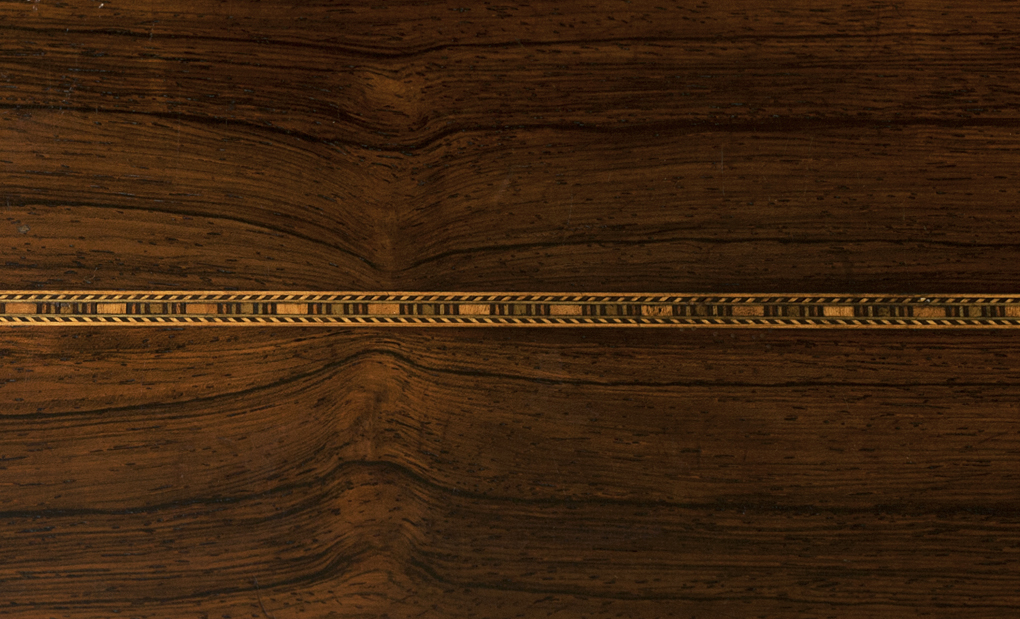
1880
1-21
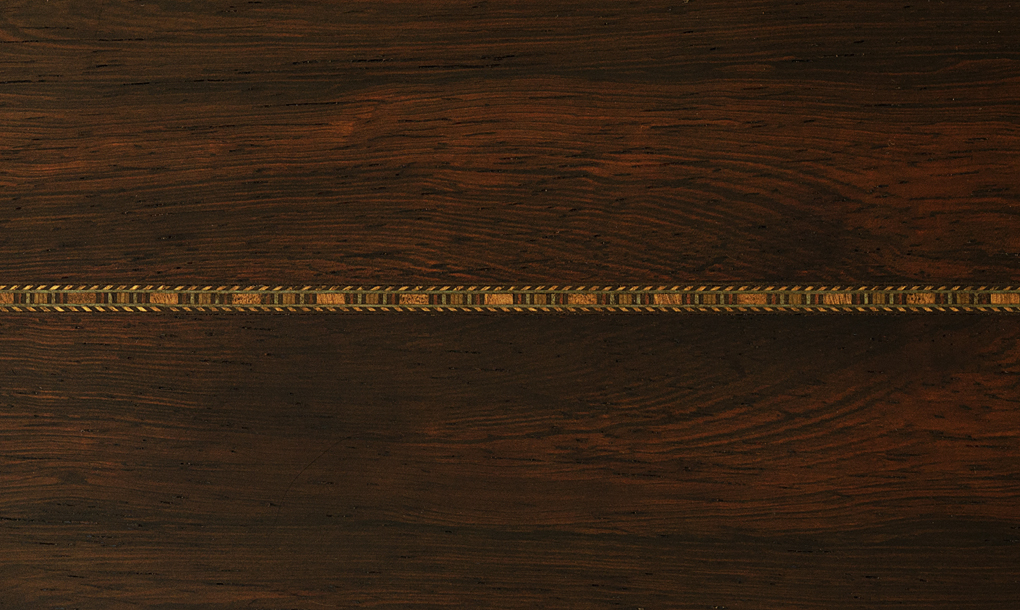
c.1896
2 1/2 - 42
1897
Tinted Top 1-21
1902
00-42S
1922
Martin Wurlitzer 0-42 / 2092
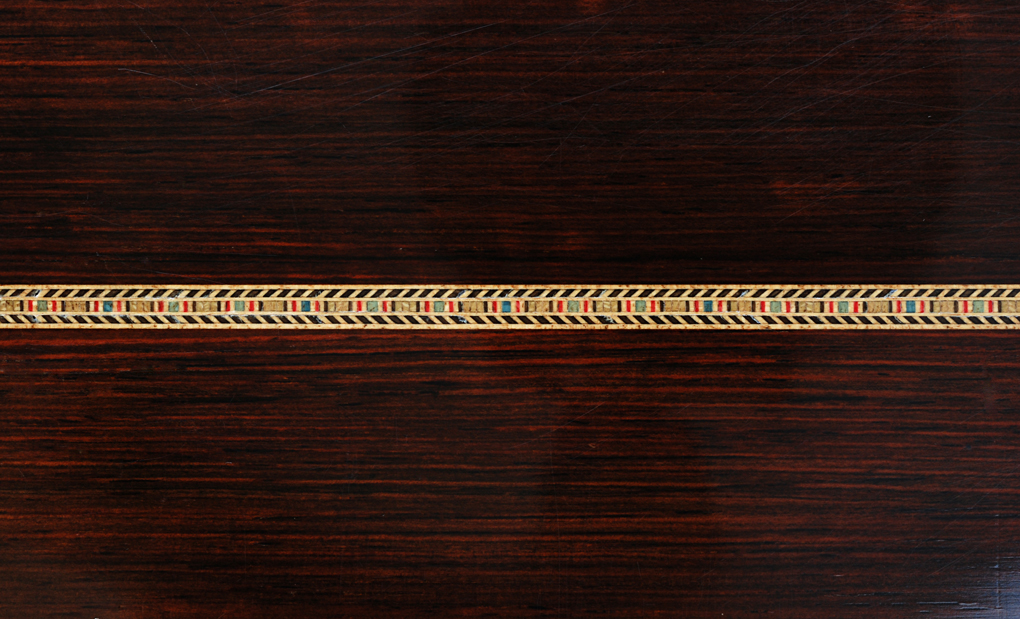 1934
00-40H
1934
00-40H
1897
1-21
"Diamond"
Back Strips
Diamond
back strips are seen mostly in limited time frames, most often on Styles
22 and 23 in
the 1850’s,
and with rope added for the mid-1840's Style 28.
c.
1855 2-23
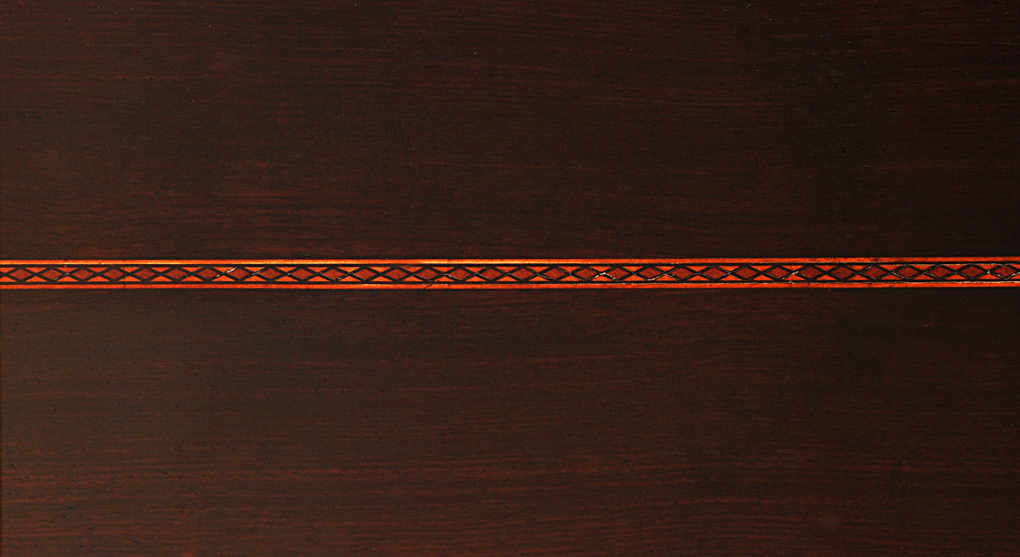 c.
1850’s 2 1/2 - 22
c.
1850’s 2 1/2 - 22
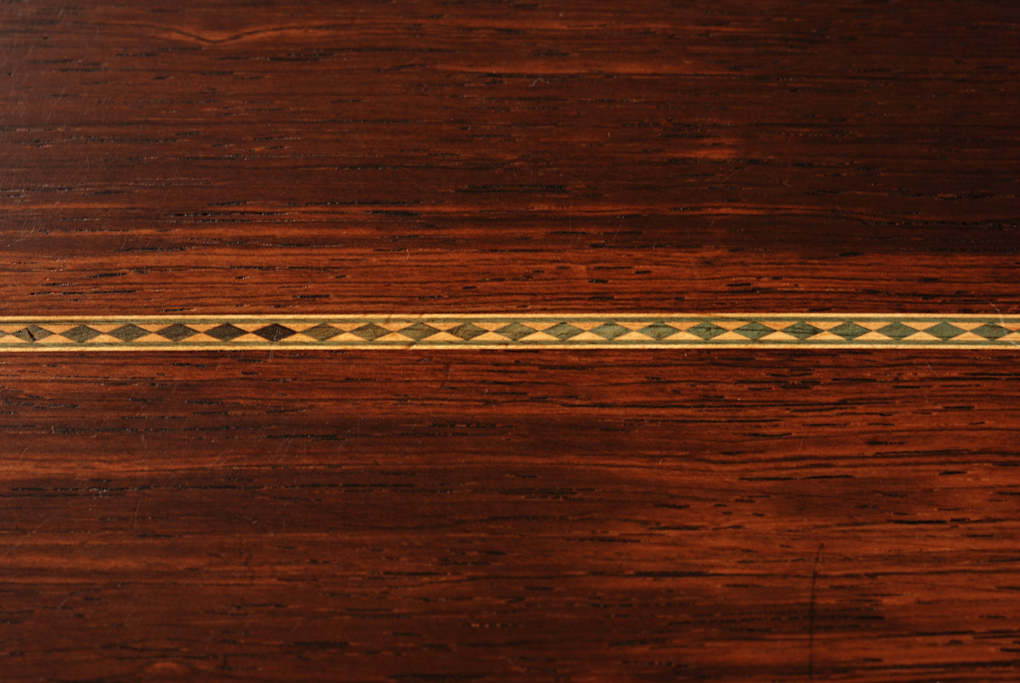 1850’s
2-23
1850’s
2-23
1880 1-21
“Diamond"
Back Strips With Rope
1845
Size 1 Early Style 28 with hybrid X
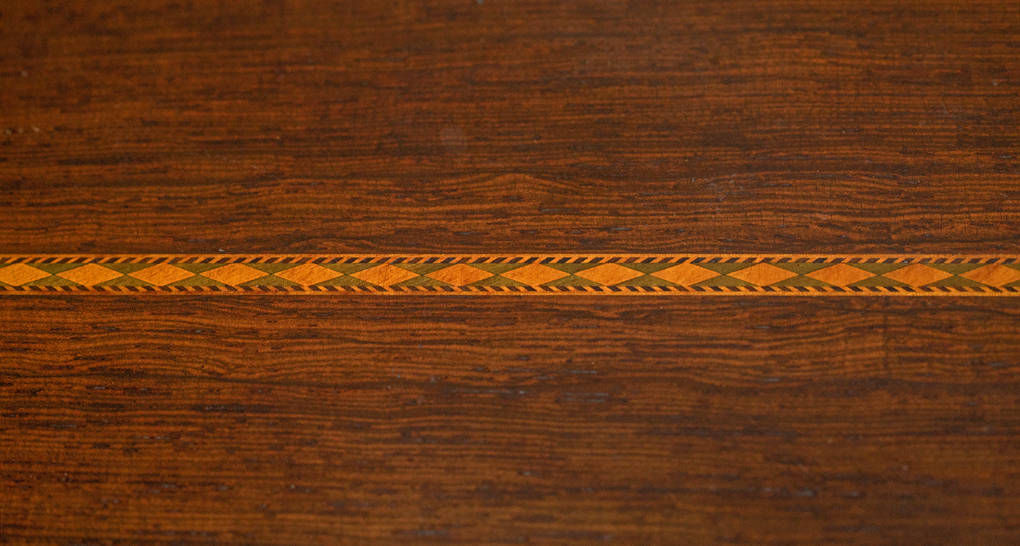
"Herringbone"
Back Strips
The
Style 21's recognizable signature combination of herringbone three
ring rosette, herringbone back strip, and straight line 5 ply top
border, can be found as early as on this 1840's Martin & Coupa...
1916
Martin / Southern California Musical Instrument Company "Nunes”
Model 1400
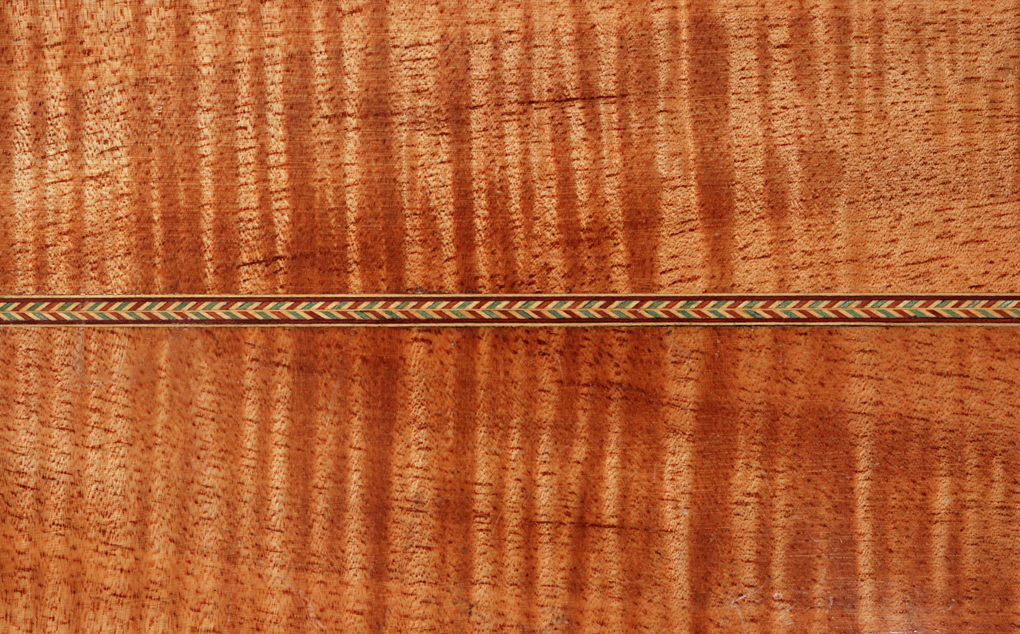 c.1860
2 1/2 - 20
c.1860
2 1/2 - 20
The
herringbone became the standard for the pre-war style 21 back strip and
Style 28 top border.
1928
0-21
"Zig-Zag"
Back Strips
Often
seen in color early on, the "zig-zag" became the standard for the
pre-war Style 28.
1870
2-27
c.
1870 1-28
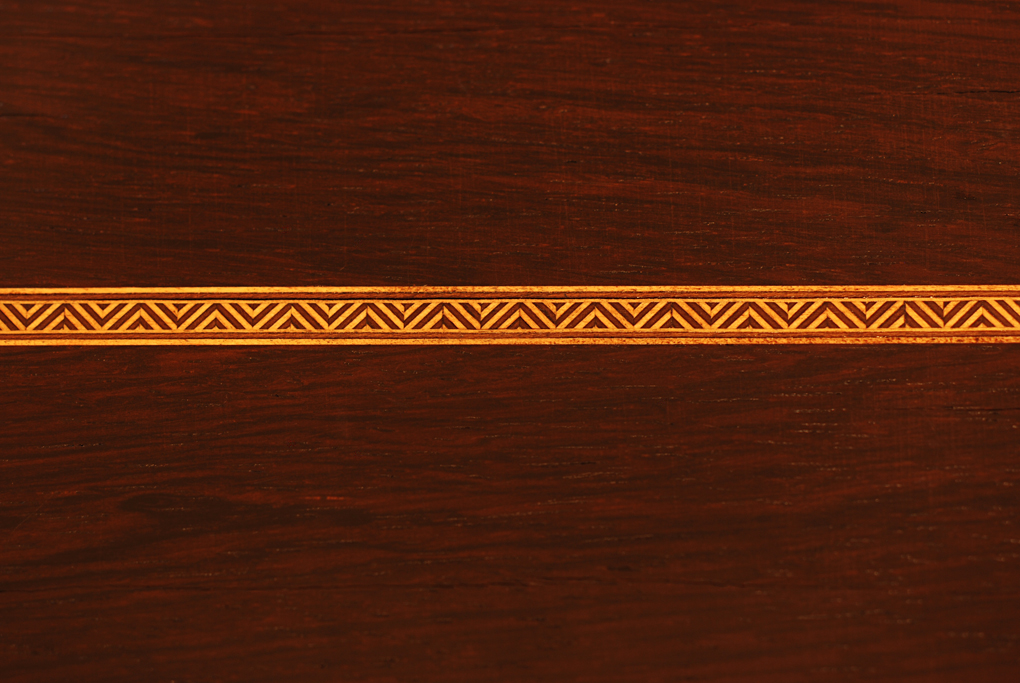
"Checkerboard"
Back Strips
Seen
on a few early rosettes and top borders, the "checkerboard" became the
standard for rosewood Martin back strips after WWII.
1964
00-21NY
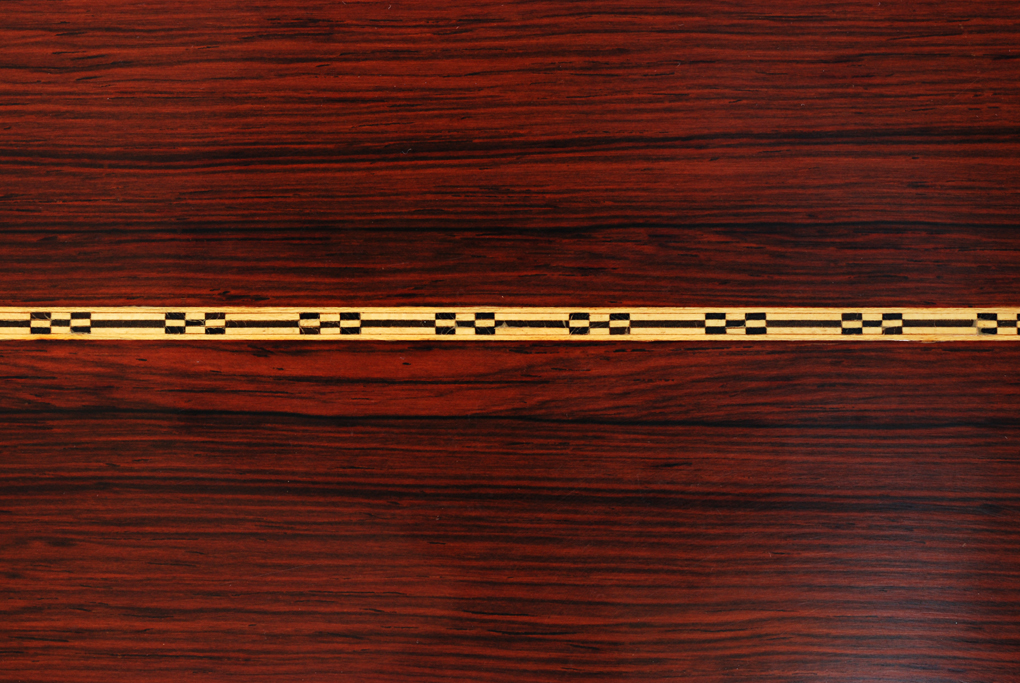
The “Checkerboard” was derived from what was apparently earlier
referred to as the “DeGoni Chain” which appeared on the border of the
Size 1 precursor to the Style 28, with Hybrid X “DeGoni” Style
Bracing, as well as period rosettes.
1845
Size 1 Early Style 28 with hybrid X
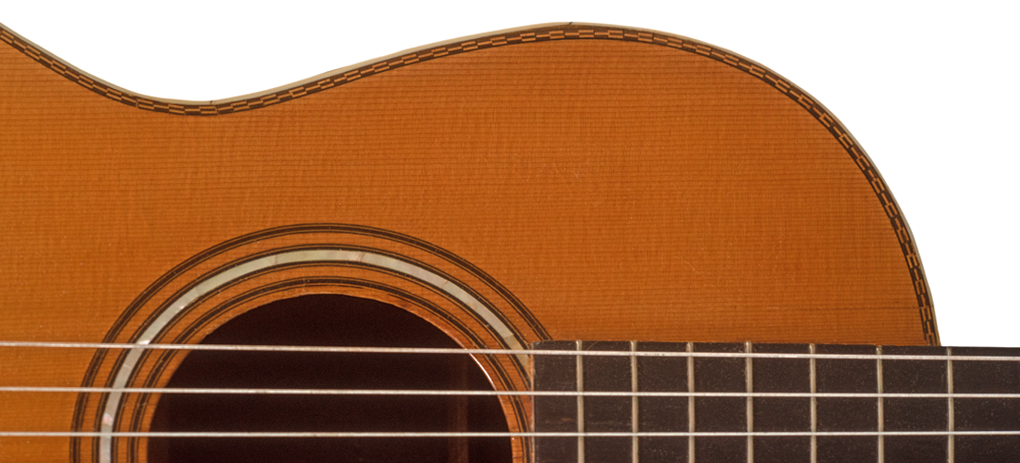
"Straight
Line" Back Strips
In
the 1840's Martin adopted many of the features of the guitars of Spain,
including simple straight lines of Holly hardwood, as seen on this Recio
from Cadiz...
1840's
Martin & Coupa
1840's
Spanish Martin
1860's
3-16
After
the 1840's, Martin used simple straight lines only for few less
expensive models such as the surprisingly uncommon mahogany Style 16.
1921
Olcott-Bickford Artist Model
Classical
Guitarist, teacher, and Martin endorsee Vahdah Olcott-Bickford preferred
high quality guitars with the simple trim of the Spanish
guitars.
The
simple straight line top borders of the post-war Style 28 that replaced
the pre-war herringbone is said to date back to the earlier archtop
Martins, but in truth appeared earlier on the Olcott Bickford guitars.
1965
D-35
Martin
adopted the simple straight lines in the 1960's for the newly introduced
D-35
Side
Strips
Another
traditional feature of Spanish guitars adopted by Martin in the 1840's
is the use of two piece sides, also divided by simple lines of Holly
hardwood, as seen in this Recio...
1840's
Martin & Coupa

For fancier
guitars, Martin began to use more ornate marquetry in place of the
simple Holly lines.
1840's
Renaissance Martin

The
two piece sides could make the instrument structurally fragile, so they
are reinforced by beautifully crafted traditional brackets called
"horqueta"...
1840's
Spanish Martin & Coupa
1840's
Spanish Size 3 Presentation Guitar
Side
Filets
The
Styles 23 and 24 are recognized by their "side filets", the simple
lines of light wood on the sides, adjacent to the rosewood bindings.
In
the early 1800's, some of the higher grade Martin guitars adopted side
filets of fancier marquetry...
1837
Hudson Street Martin
Ivory
Fingerboard Martin
Marquetry
side filets often consist of one half of the two mirrored pieces that
make up the corresponding arrowhead.
1840's
Spanish Size 3 Presentation Guitar
1840's
Spanish Martin
1850's
Martin Style 33
"The
End".
End strips were seen mostly in Martins earlier
decades…
c. 1860 2 1/2 - 22
c.
1855 2-23
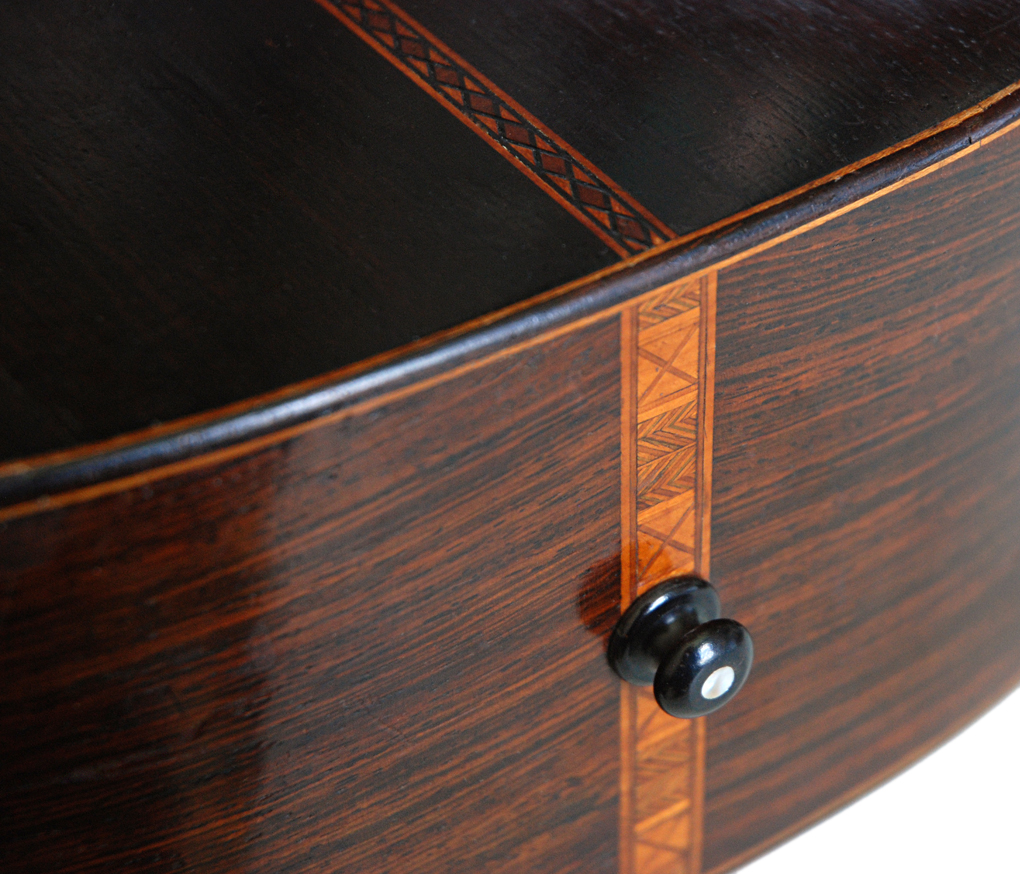 c
1860 2-24
c
1860 2-24
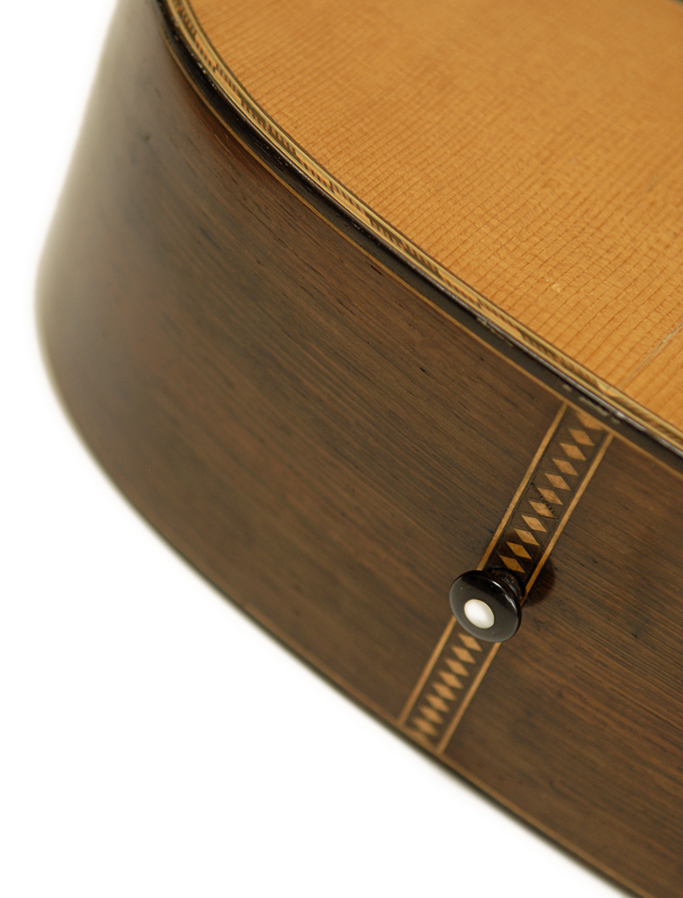
...but
were among the interesting and personalized early features carried
over on the Style 24, long after other models had become simplified
and standardized.
1888
Style 2-24
To See Robert Corwin's Classic Photography of Folk and
Roots Musicians, visit:
For Information on
Photography for
Exhibition, Publication, CD's,
Promotion, Web Pages, Tour Books,
to Purchase Photographic
Prints, or
If You Have Questions About An
Early Martin Guitar:
e-mail: Robert
Corwin
entire site copyright ©1998 through
2019 Robert Corwin/Photo-Arts. All rights reserved.

